Beaverbrook Art Gallery – Some Highlights
I recently had the opportunity to visit the newly expanded Beaverbrook Art Gallery in Fredericton, New Brunswick and was blown away by what I saw and experienced. Here are just a few of the highlights from the works of art on display and my take on why they are worth seeing.
History of the Beaverbrook Art Gallery
The starting point in any discussion about the Beaverbrook Art Gallery has to be the name and the person behind it. Max Aitken was born in Ontario, but raised in Newcastle, New Brunswick which he considered his hometown. He had an insatiable desire to be financially successful and by age 30 was a millionaire with interests in securities, insurance, cement and steel. In 1910 he moved to England and hooked up with another New Brunswicker, Andrew Bonar Law who would go on to become the Prime Minster of Britain in 1922. Aitken was an adept political organizer and got himself elected to Parliament only months after arriving from Canada and a year later received a knighthood from George V. In 1917, thanks largely to his contributions to the war effort, he was granted a peerage which he took under the name of Lord Beaverbrook, a nod to his Canadian heritage.
Long story short, over the next forty years Beaverbrook built up the largest and most influential media empire in Britain and was a major force in determining British foreign and domestic policy. He also became one of the richest men in the world and amassed a large art collection, specializing in the works of British artists in line with his anglophile sentiments. However, he did not ignore his Canadian roots and acquired arguably the largest private collection of Canadian art extant at the time. In the mid 1950’s he conceived the idea of building an art gallery in Fredericton to house many of his best pieces, donating 300 of his works to establish the Beaverbrook Art Gallery. It opened in 1959 in what was then considered to be an ultra modern design by local architect Neil Stewart which featured an interior that was solely focused on the best way to showcase the art on display. This was a marked contrast to most art galleries of the time that were repurposed buildings not originally built as art galleries. The Louvre is probably the most famous example of this.
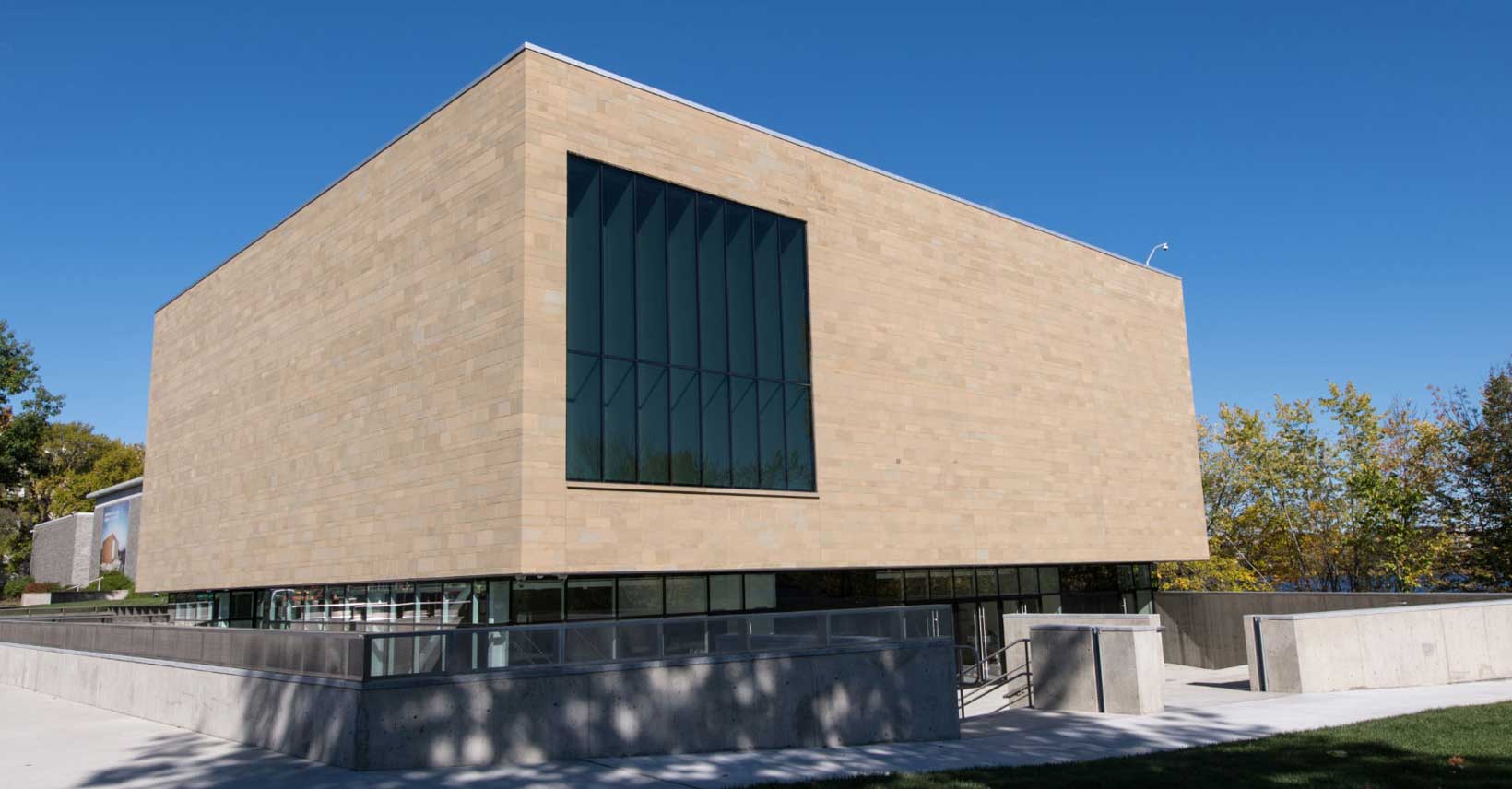
Lord Beaverbrook’s success in establishing the Beaverbrook Art Gallery led to other prominent New Brunswick families such as the Irvings and McCains becoming patrons, using their influence to grow the collection. Equally important, the widow of another New Brunswicker who had made a fortune in Canadian businesses Sir James Dunn, donated much of his art collection to the gallery, including four works by Salvador Dali, two of which I’ll discuss later in this post. Incidentally, Lady Dunn has the distinction of being not only the widow of Sir James Dunn, but also Lord Beaverbrook who married her when he was 83.
The Beaverbrook Art Gallery went through a number of disputes over the ownership of some of its most important works from charitable foundations that Beaverbrook had established in Britain. After years of wrangling these were finally resolved in 2014 which paved the way for an expansion of the gallery which now had some 7,000 works of art in its possession. There had been expansions in 1983 and 1995, but the next was in effect to be an entire remake. In the middle of the expansion along came Covid and the gallery was closed from 2020 until September 2022 when it emerged from its cocoon as the largest art gallery in Atlantic Canada with an eye popping new look both inside and outside.
Here is a photo from January, 2023 showing the Harrison McCain Pavilion designed by the Toronto architectural firm KPMB.
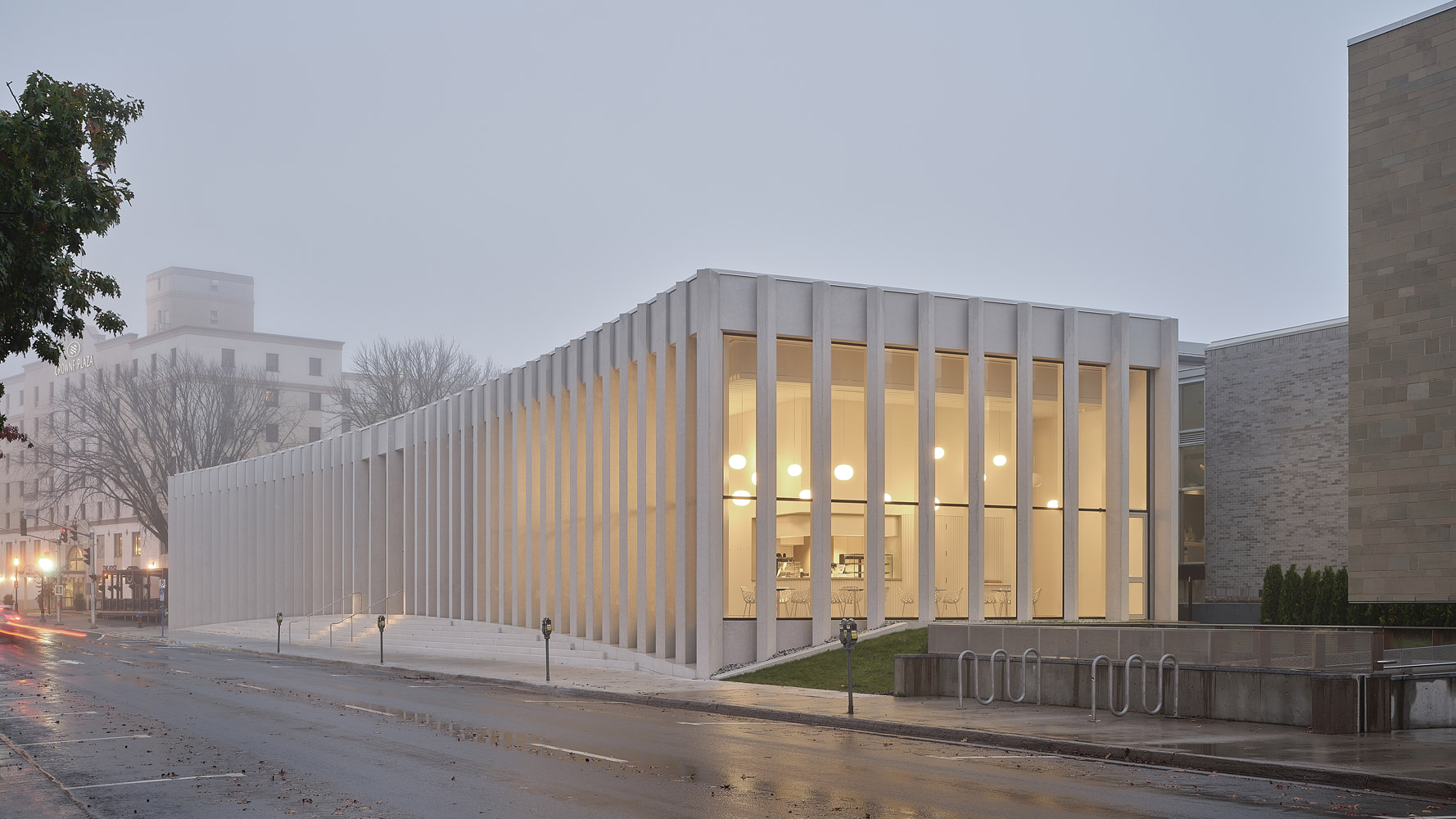
I had last visited the Beaverbrook Art Gallery a few years before Covid when the Travel Media Association of Canada held its annual conference in Fredericton and was pretty impressed at the sheer size of the new addition when I visited today.
So with this rather laborious introduction let’s go look at some art.
After paying your admission ($12.00/$10.00 for seniors and students) you walk up a ramp and make a left turn where two doors lead into the gallery proper. The walls on each side have murals just completed in March, 2023 by Mi’kmaq artist Jordan Bennett who hails from Newfoundland. They are not only bright and colourful, but meant to help play a role in the ongoing reconciliation efforts between Indigenous and non-Indigenous Canadians. Everyone who enters the gallery will pass by these murals.
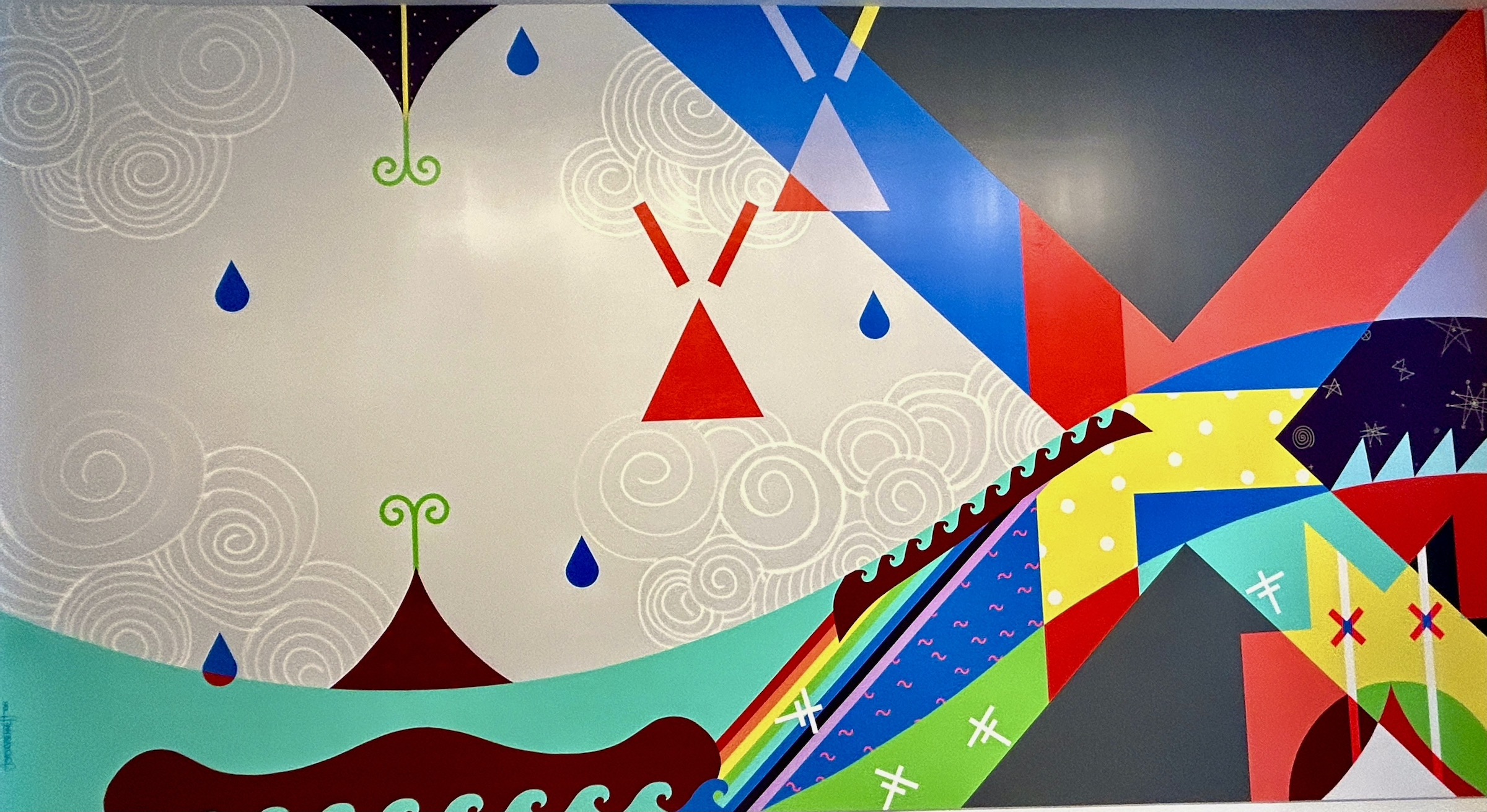
The entrance doors open onto a large room where the works of New Brunswick ceramic artist Judy Blake are on display in an exhibit titled ‘Seed Vessels’. Again, like the murals, these works in their totality create a visual impact that is quite stunning. This is one wall of the room.

Each item in the room invites closer inspection and one could spend an hour just examining each one in detail. For example, these two pieces that reminded me of giant cowrie shells.
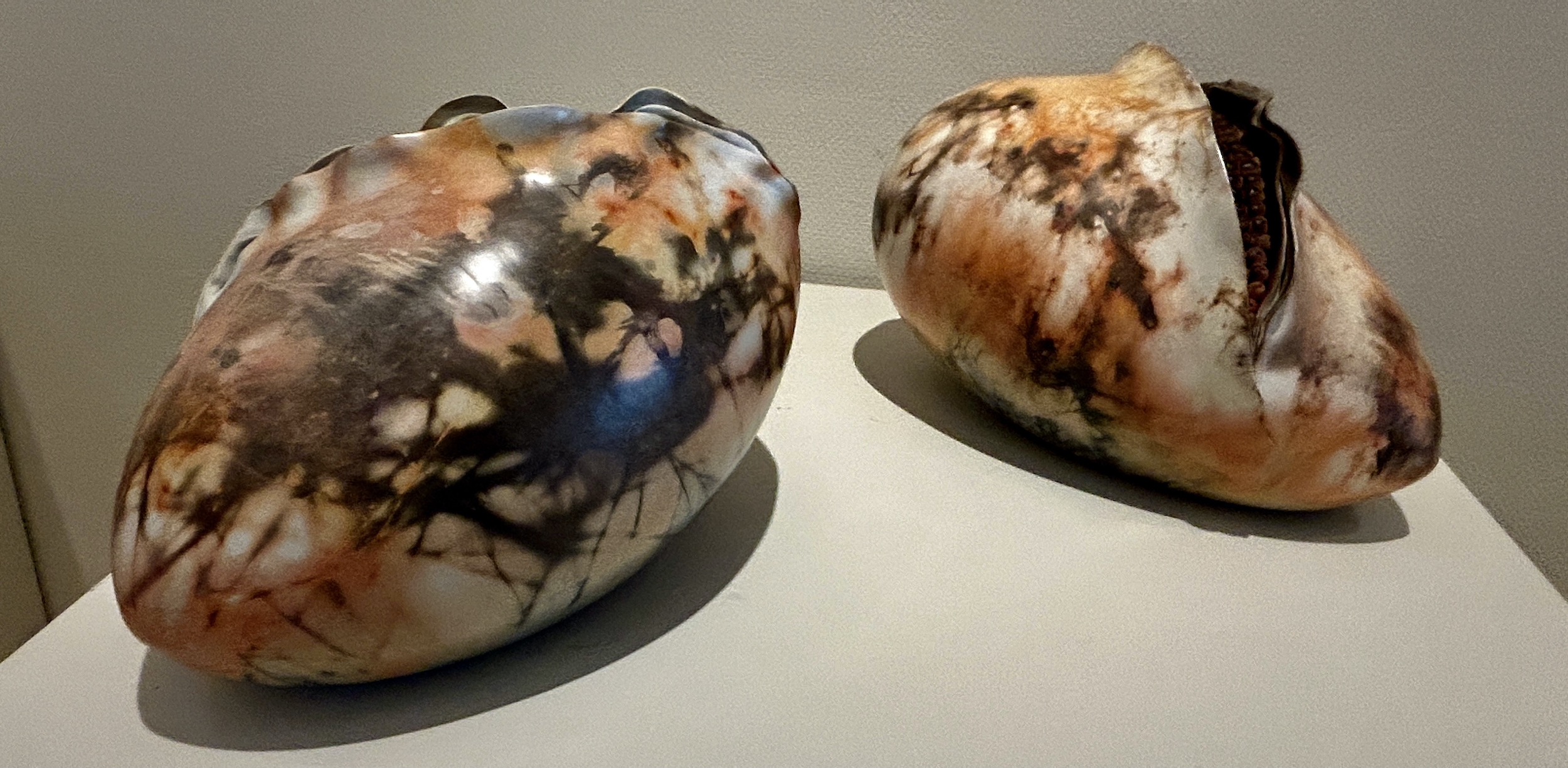
From this room one has a choice of how to proceed in touring the Beaverbrook Art Gallery. I chose to go left and enter the Canadian collection which I well recalled from previous visits is outstanding.
The first thing that catches your eye is this work by Dutch-Canadian painter Cornelius Krieghoff.
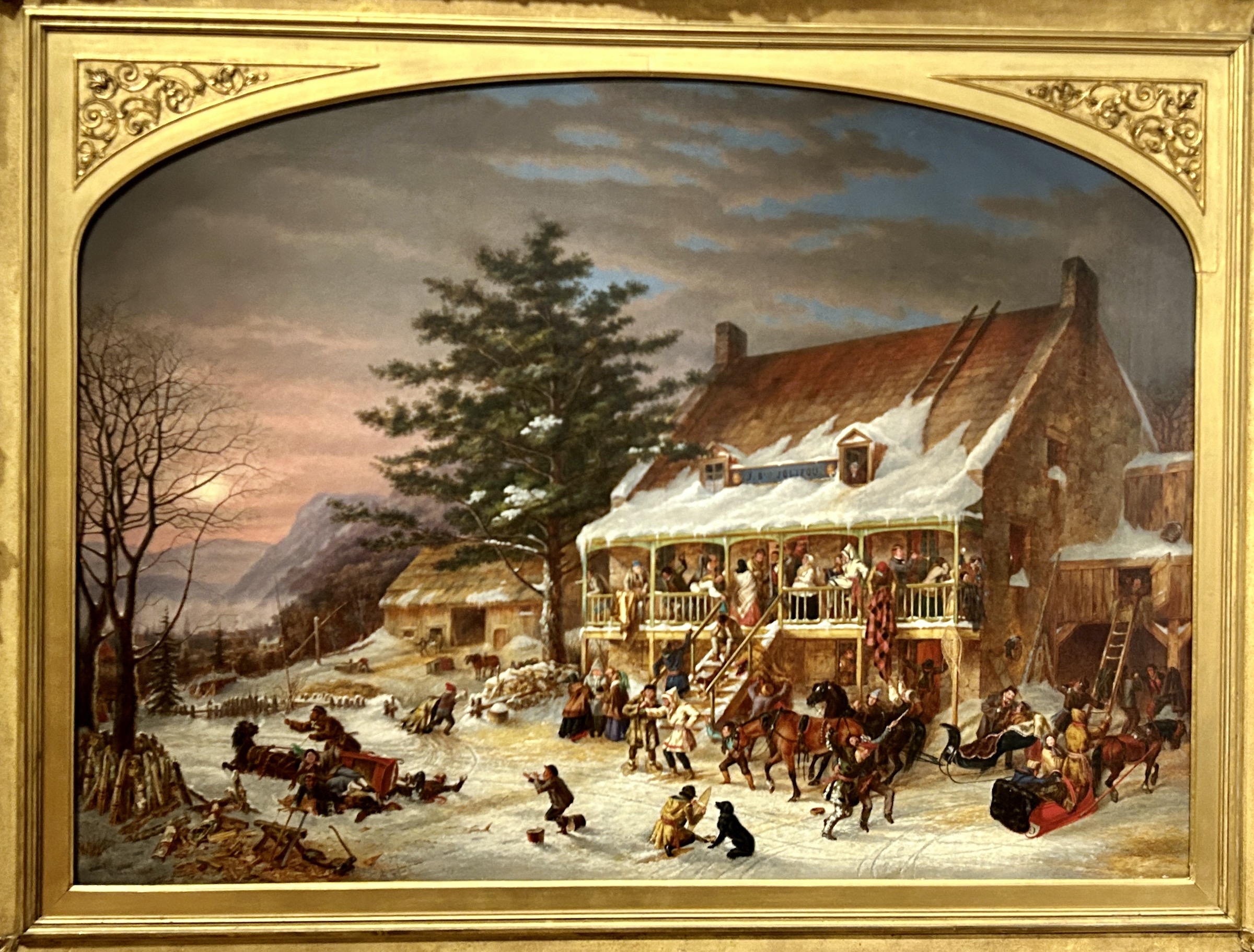
Krieghoff was a genre painter who tried and largely succeeded in portraying a distinctly unique French Canadian way of life as it existed in the mid-19th century. Merrymaking is considered by many to be his quintessential work with literally dozens of drunken revellers cavorting in and about the grounds of a rural auberge. The style owes much to the paintings of Peter Brueghel the Elder who first started painting ‘real people’ as opposed to the traditional religious subjects over three hundred years earlier. Krieghoff certainly would have been familiar with Brueghel’s work and succeeded in transferring the method and style to a Canadian setting.
This is a painting that the more you look at it the more you see.
Lord Beaverbrook paid $25,000.00 for this work in 1957, then a record for a Canadian painting and from the outset it has been one of the stars of the Beaverbrook Art Gallery collection.
Beside this painting is a montage of smaller Krieghoff works. His importance as an artist also stems from the fact that he often painted Indigenous figures in their traditional dress creating a record of them before the advent of photography.
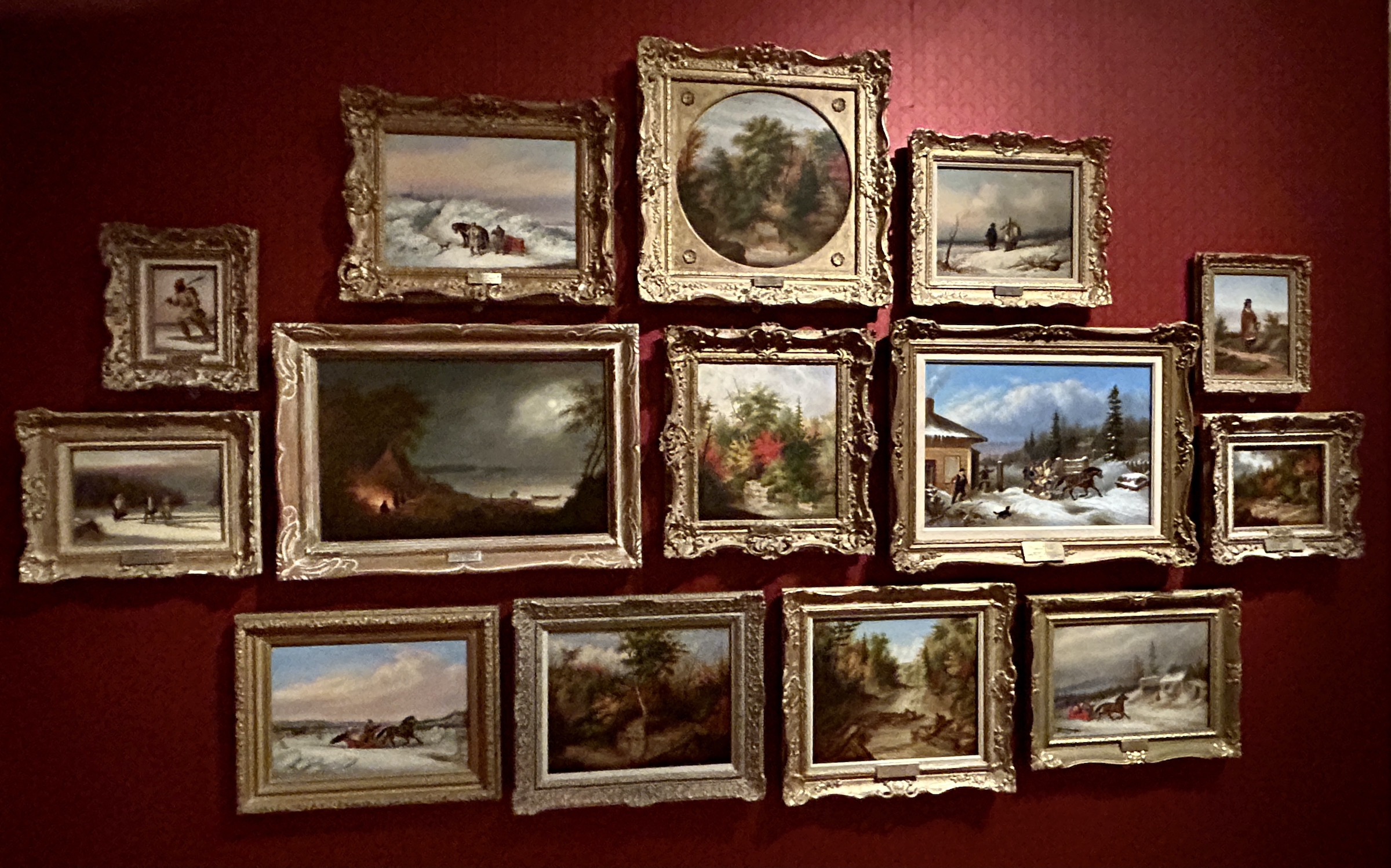
Another artist who captured the essence of rural Quebec was Marc-Aurèle de Foy Suzor-Coté who painted in many styles, but is most remembered for his plein air works very much in the tradition of the French Barbizon school.
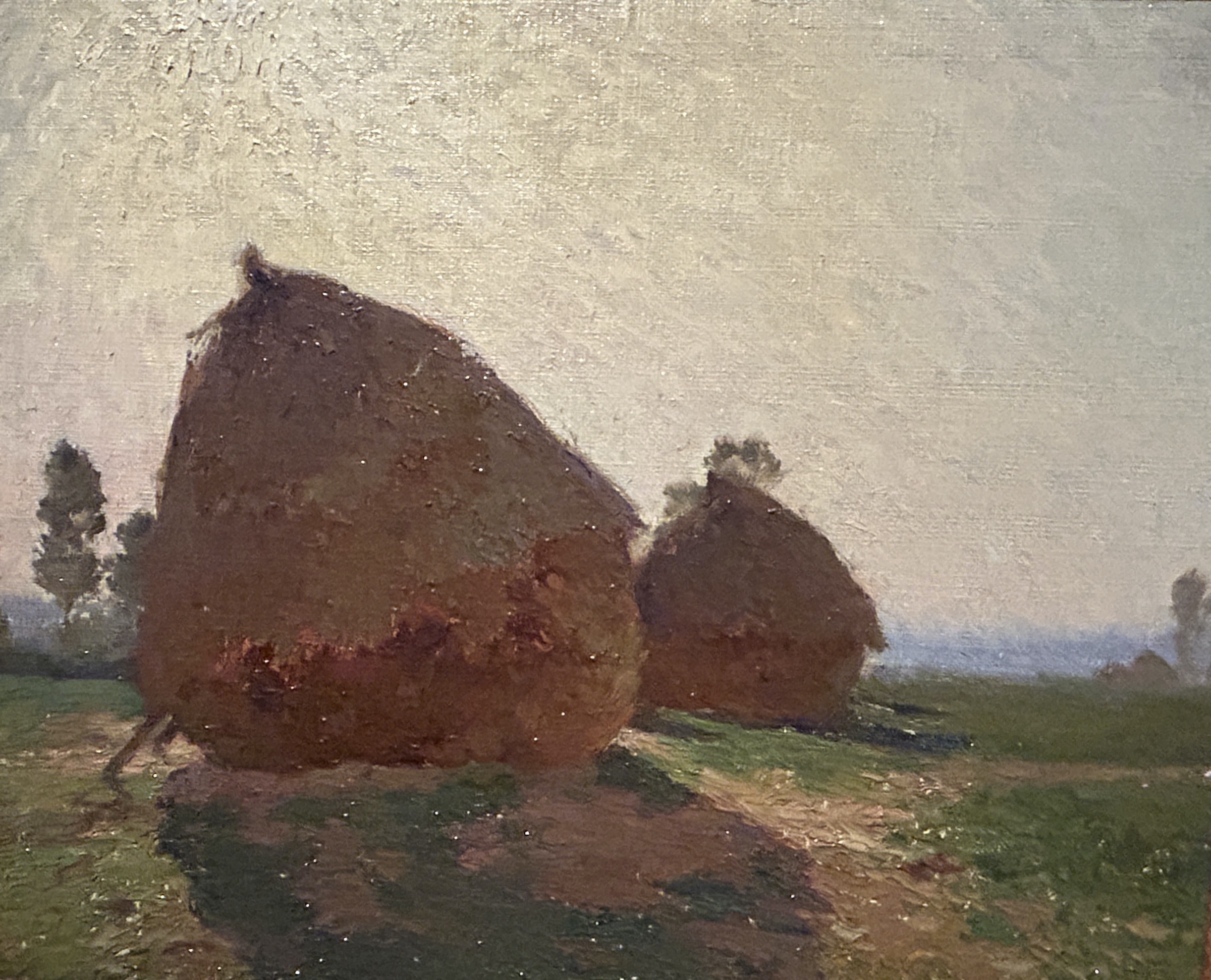
Les Meules (aka Haystacks) is typical of his best works.
Paul Kane was an itinerant artist who traveled extensively in the Canadian west at a time when it was still largely unaffected by large scale European settlement. Although he might not have been the most talented artist of the time, his many paintings and drawings of the Indigenous way of life created an invaluable archive of knowledge that otherwise might never have been documented. While Lord Beaverbrook focused primarily upon British artists for his personal collection, he also knew that it was important to acquire works by artists such as Kane to make sure they stayed in Canada where they could not only be appreciated, but constitute a part of our Canadian heritage.
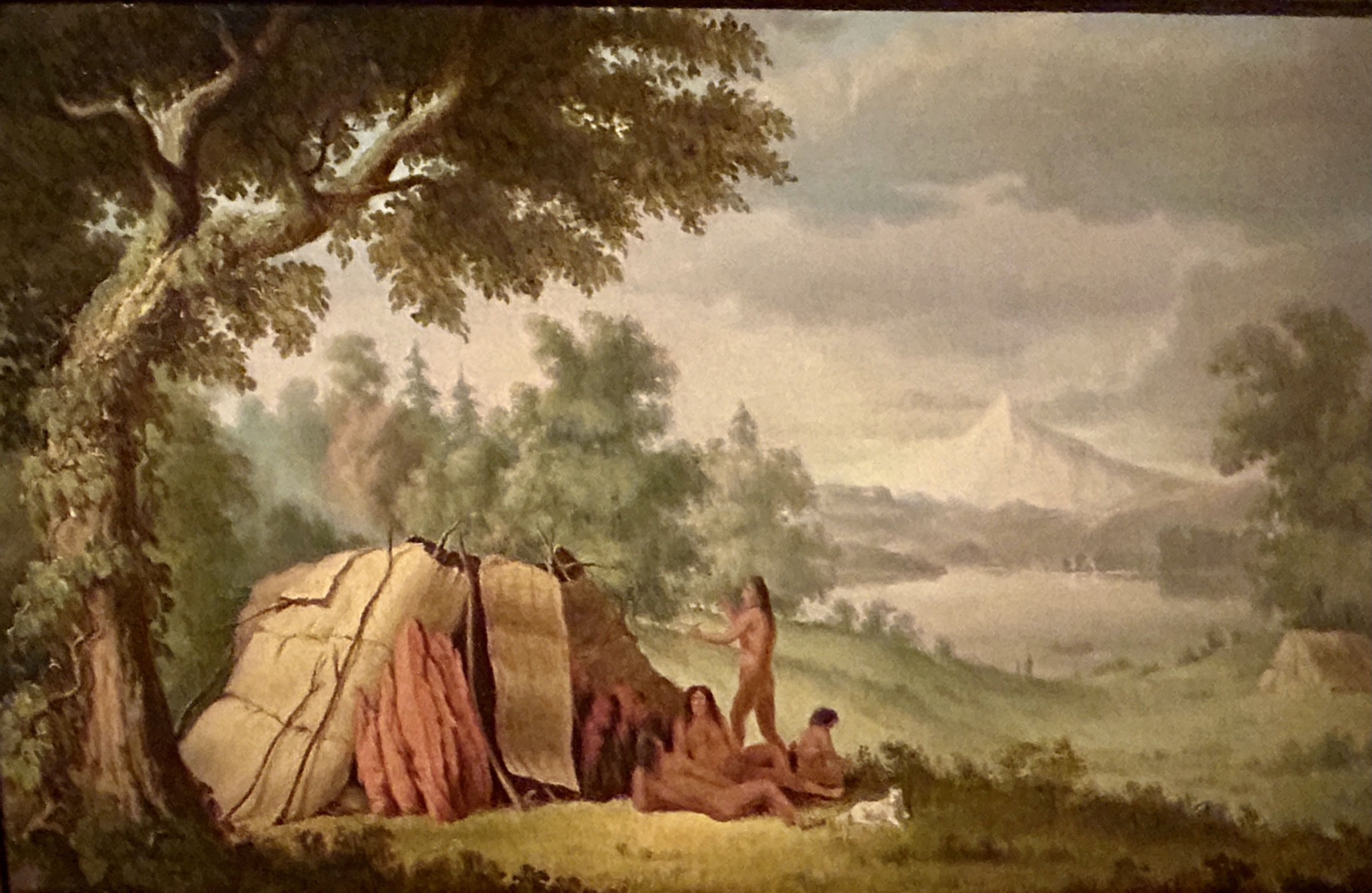
Another artist that Lord Beaverbrook knew was important for her documentation of West Coast Indigenous people was Emily Carr and he donated a number of her works to the Beaverbrook Art Gallery. In 1912 she had just returned from Paris where she was introduced to the works of the Fauves of whom Henri Matisse is probably the best known, when she embarked on a six-week painting trip on BC’s west coast. The Fauvist influence can be seen in these paintings of which I think the one below is the best example. BTW Cape Mudge is the southernmost point of Quadra Island which lies between Vancouver Island and the mainland.
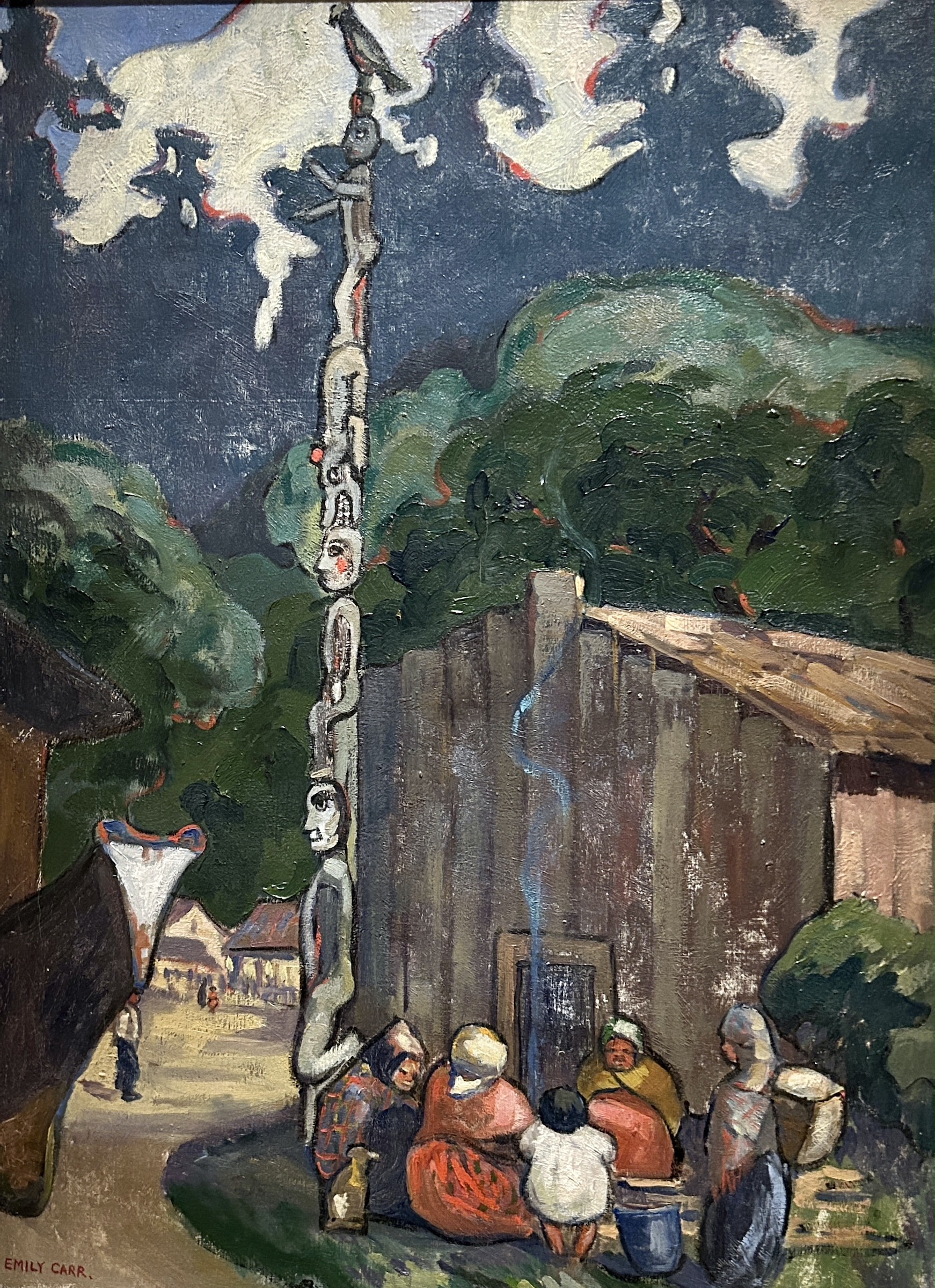
If you ask the average Canadian to name one famous Canadian artist the answer is likely to be Tom Thomson. He was the first Canadian artist to try to depict the Canadian landscape through the eyes of someone who was truly in love with it. One might say he was trying to capture the essence of ‘Canada’. Many people mistakenly think he was a member of the Group of Seven, when he was actually an inspiration to them. Because of his premature and mysterious death at age 40 there are only about fifty full size canvases by Thomson in existence, a fact that makes them not only rare, but expensive as well. In 2009 his Early Spring, Canoe Lake sold for $2,592,000.00 USD. The fact that Lord Beaverbrook, aside from collecting works that were important for their depictions of life in early Canada, also collected works such as this Thomson painting, points to his acuity in recognizing great art for art’s sake.
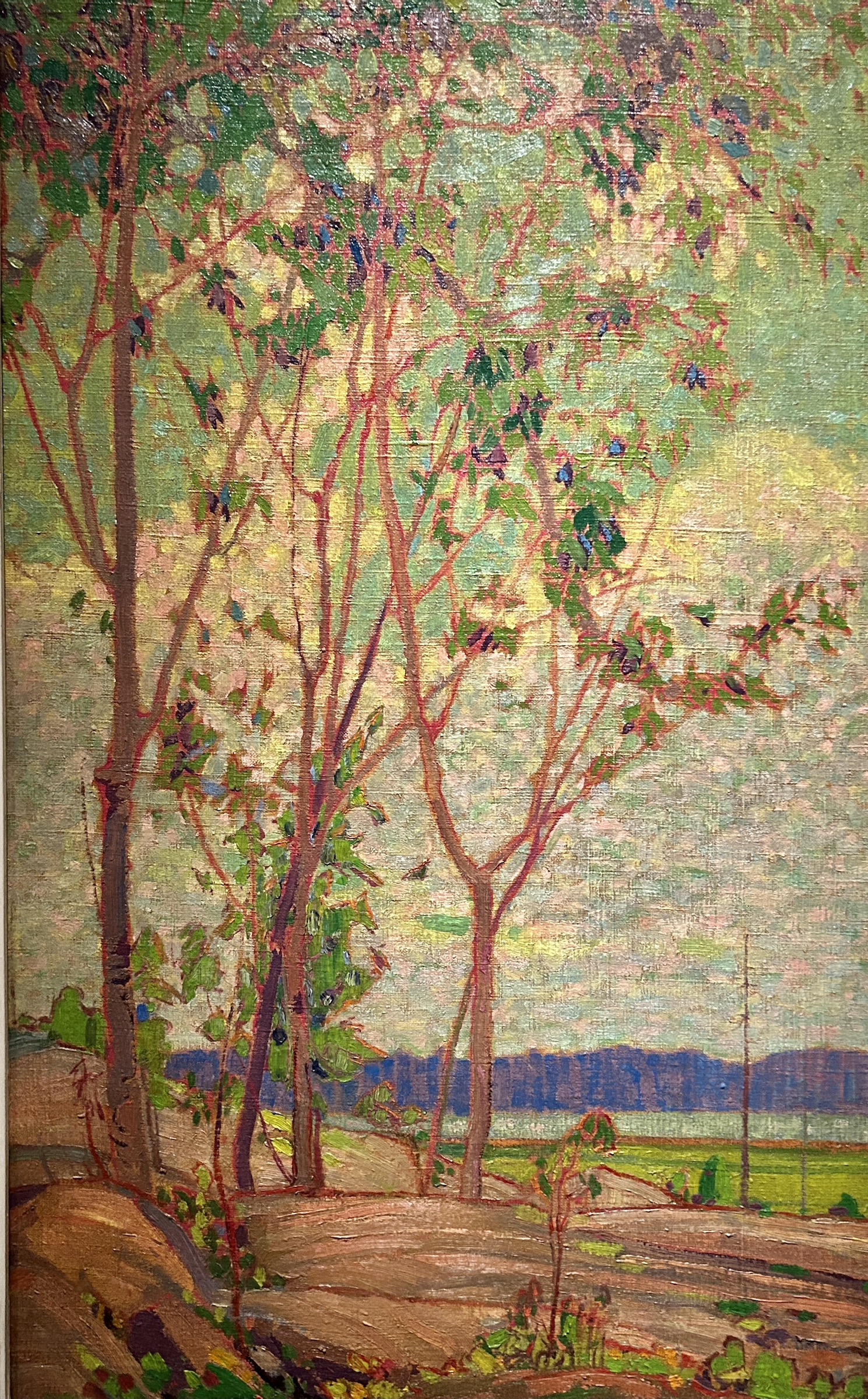
The next painting is the first I have featured that was not donated by Lord Beaverbrook and by an artist I was not aware of before seeing this work. I confess that it caught my eye more because of the scene that it depicts than because I thought it was an important work, although it clearly is. Read this link on the life of Peter Clapham Sheppard written by Louis Gagliardi who is the person who donated this work to the Beaverbrook Art Gallery. It is a compelling story about an artist unappreciated during his lifetime who died in penury at a Salvation Army home in Toronto in 1965.
The painting is labelled as having been completed in 1934-35, but I am unable to find any information about how, why or when Sheppard was in Halifax in the middle of the Great Depression. I do know this. The only building still standing from those depicted in this work is St. Matthew’s church. Today from this viewpoint you would see the horrendous architectural horror and mistake we call the Maritime Centre which is so out of proportion that it ruins this entire part of the city.
The boat is a Grand Banks schooner and in the 1930’s there were still a few still going to the fishing grounds every year with men getting into dories like the one aboard this schooner to jig cod and halibut until the little boat was full. This painting is a great start to getting to know more about Peter Clapham Sheppard and getting his works the recognition they deserve.
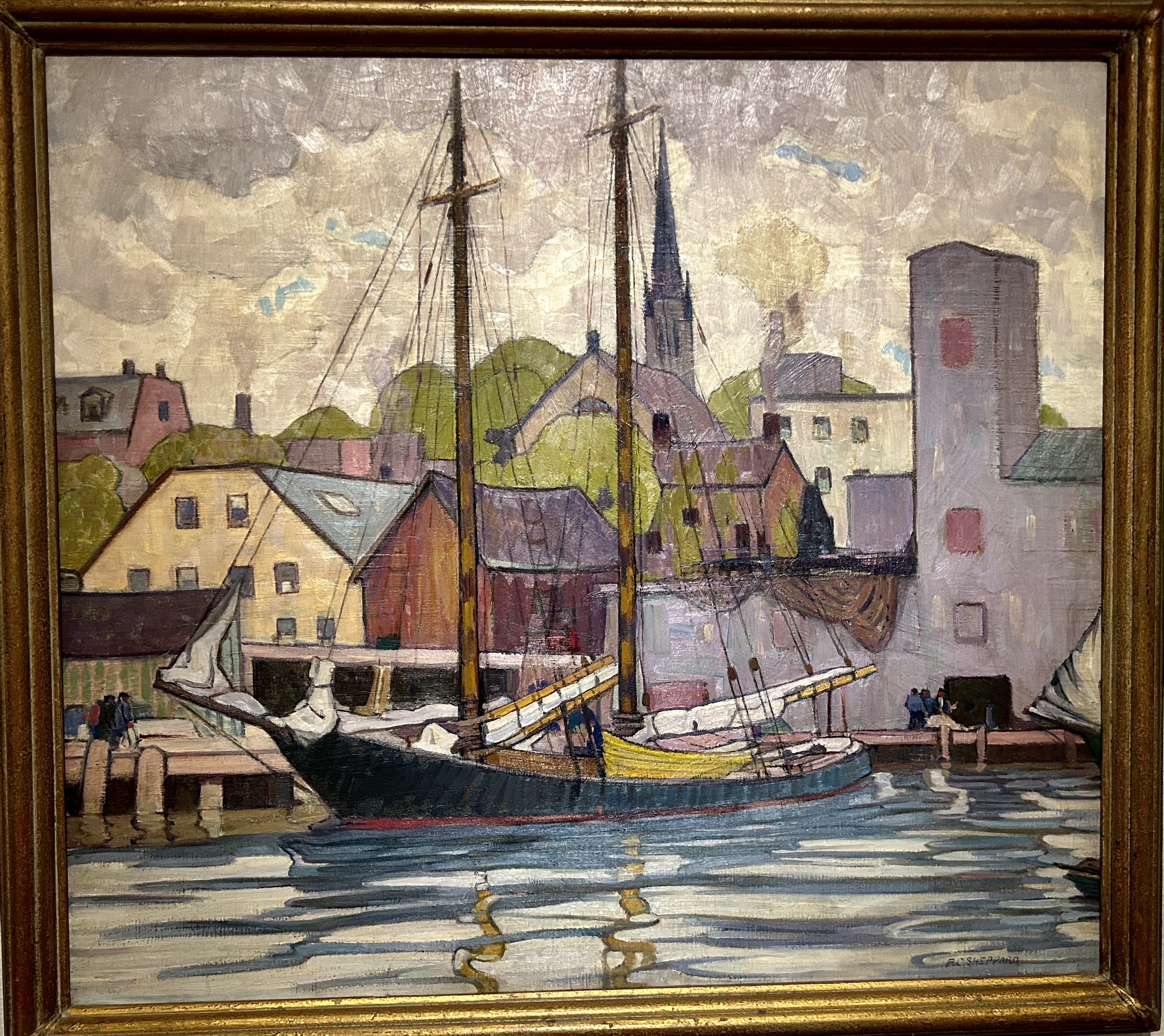
The next work I am including might seem a jolt compared to the works already featured and it is. I am not one who laments the fact that much modern art is somewhat indecipherable and to use the overworked term ‘abstract’. As Freud said, “Sometimes a cigar is just a cigar” and in the case of a painting, sometimes it’s just colour like this work by Montreal native Guido Molinari. The photo does not do justice to the powerful effect this large canvas has upon the viewer, especially after viewing the much smaller canvases that preceded it. The Beaverbrook Art Gallery was wise to acquire an important work by one of Canada’s most recognized abstract artists.
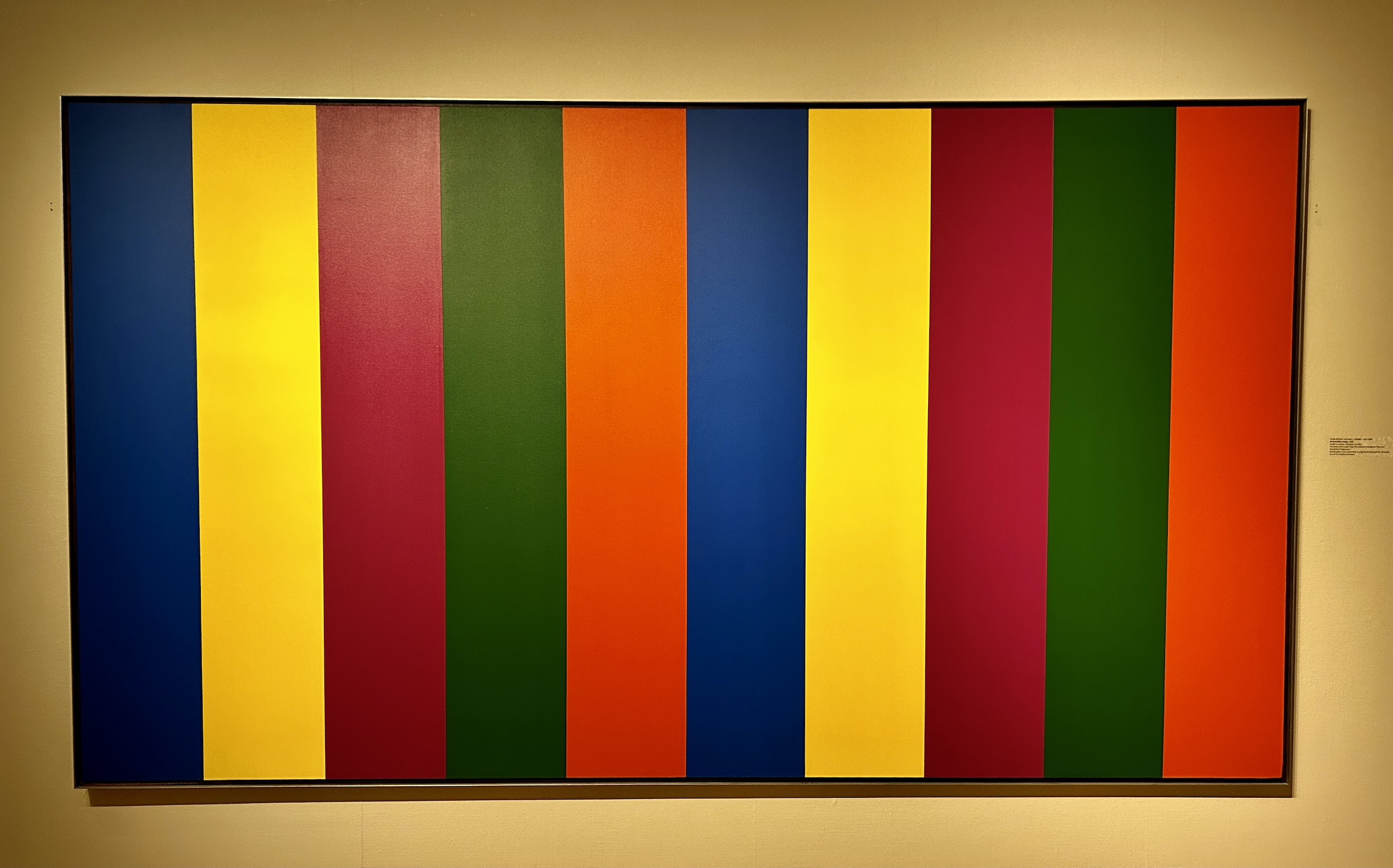
Speaking of abstract, there is no Canadian more widely known throughout the world for his works than Jean-Paul Riopelle who was accepted into the art community of Paris in the late 1940’s as an equal and spent the next fifty years there. While often compared to Jackson Pollock, his mature style is in fact completely different. While Pollock used a brush for his works, Riopelle used a palette knife and once you see a Riopelle in person you will instantly recognize his works thereafter. Hameau is the French word for hamlet, a place and not the person.
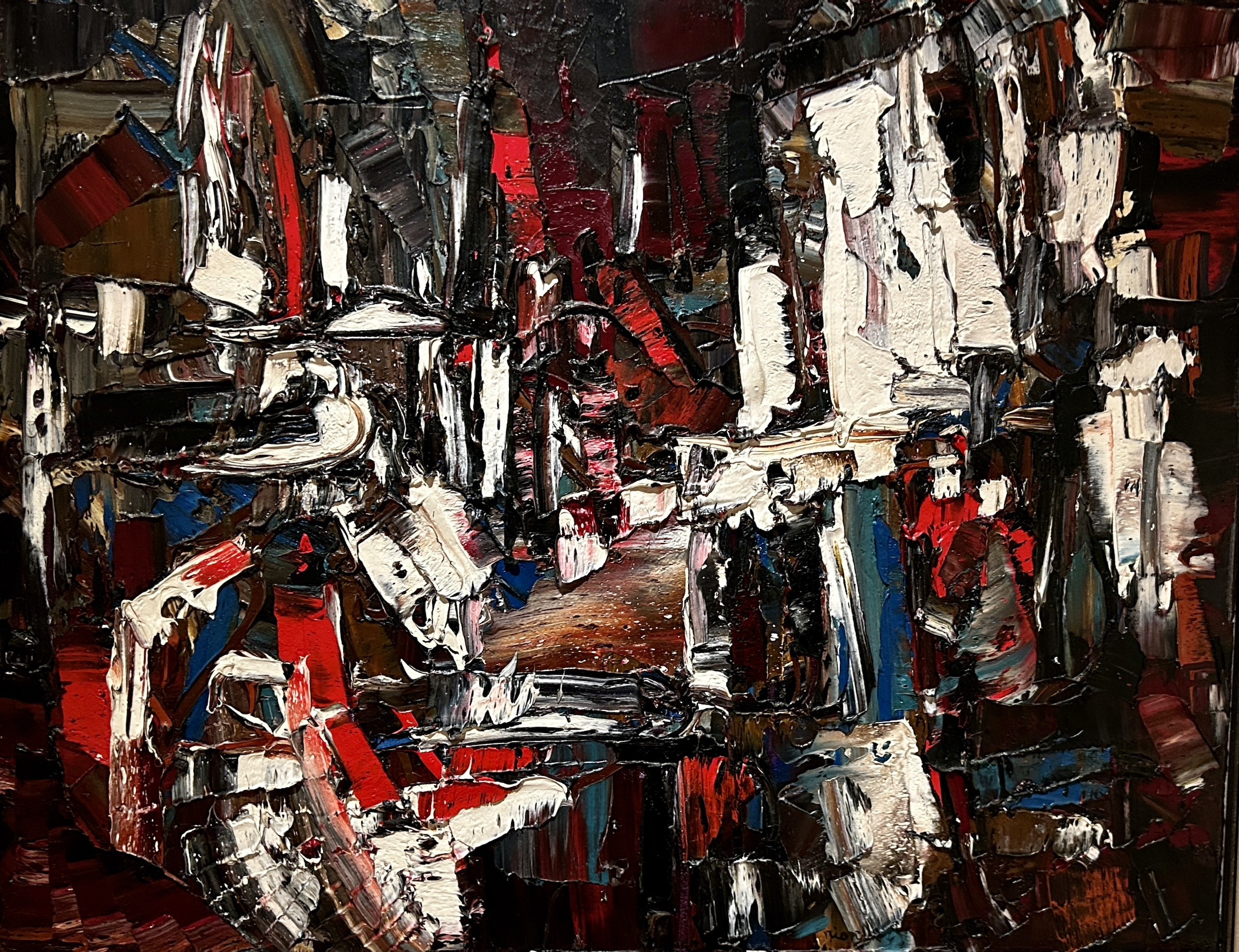
It is rare to find a Canadian artist in a European gallery, but I last featured Riopelle with this painting in most post on the Kunstmuseum of Basel, Switzerland. That museum contains mature works from every major western artist of the last 150 years so to see a Canadian included is indeed recognition of his international stature. Although his works have not reached the stratospheric heights of some other contemporaries, his works have sold for as high as $5,700,000.00 USD.
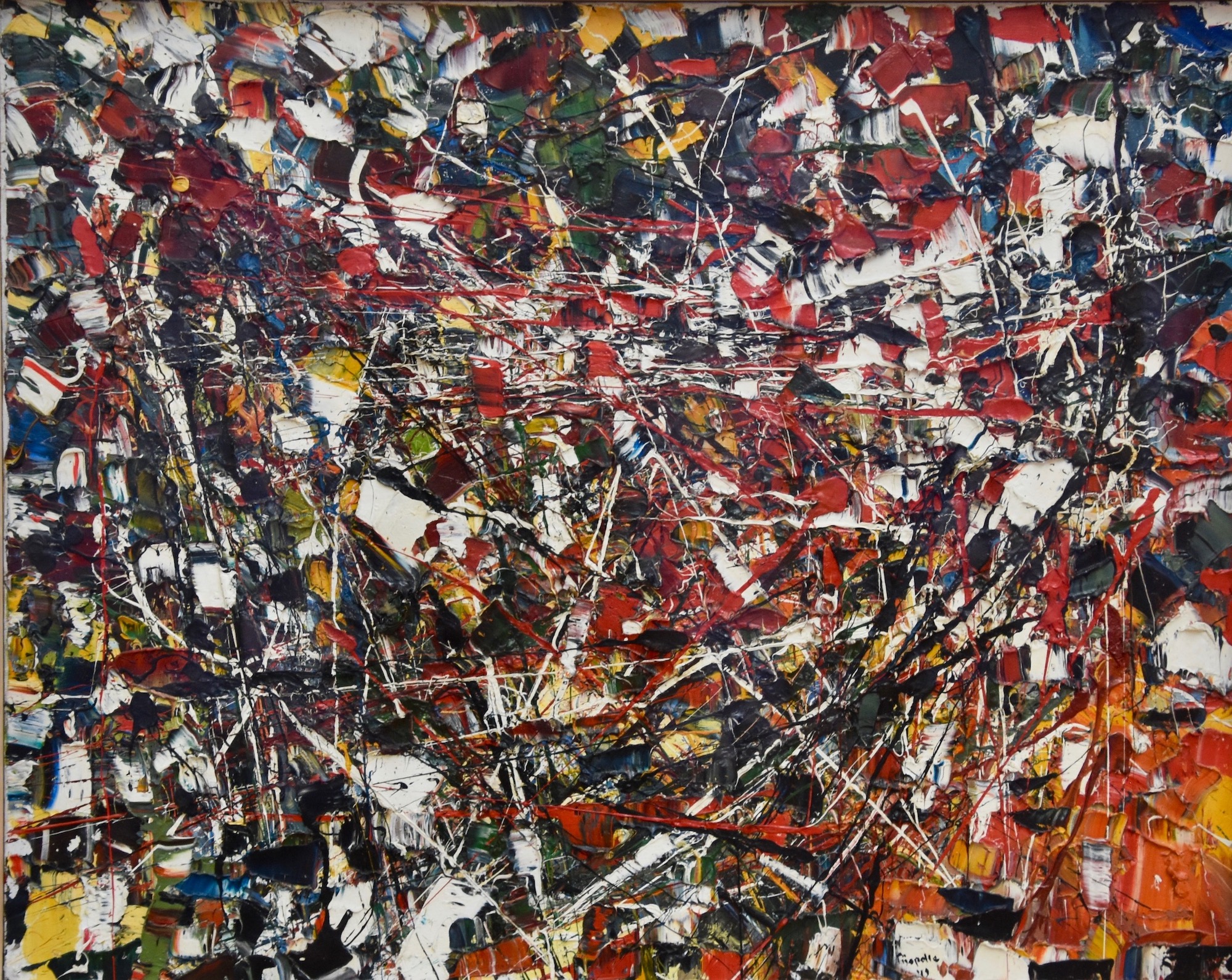
My final work from the Canadian section of the Beaverbrook Art Gallery is by Natalka Husar, an American born, but now Canadian artist who is also a champion for the Ukrainian cause, reflecting her ancestry from that now war torn country. This is the intriguing titled Self-Portrait as a Has Been which is part of her True Confessions series of self-portraits. It’s definitely got surrealistic features, but the manner in which she has almost sunk into insignificance in the middle of the work is unique and compelling.
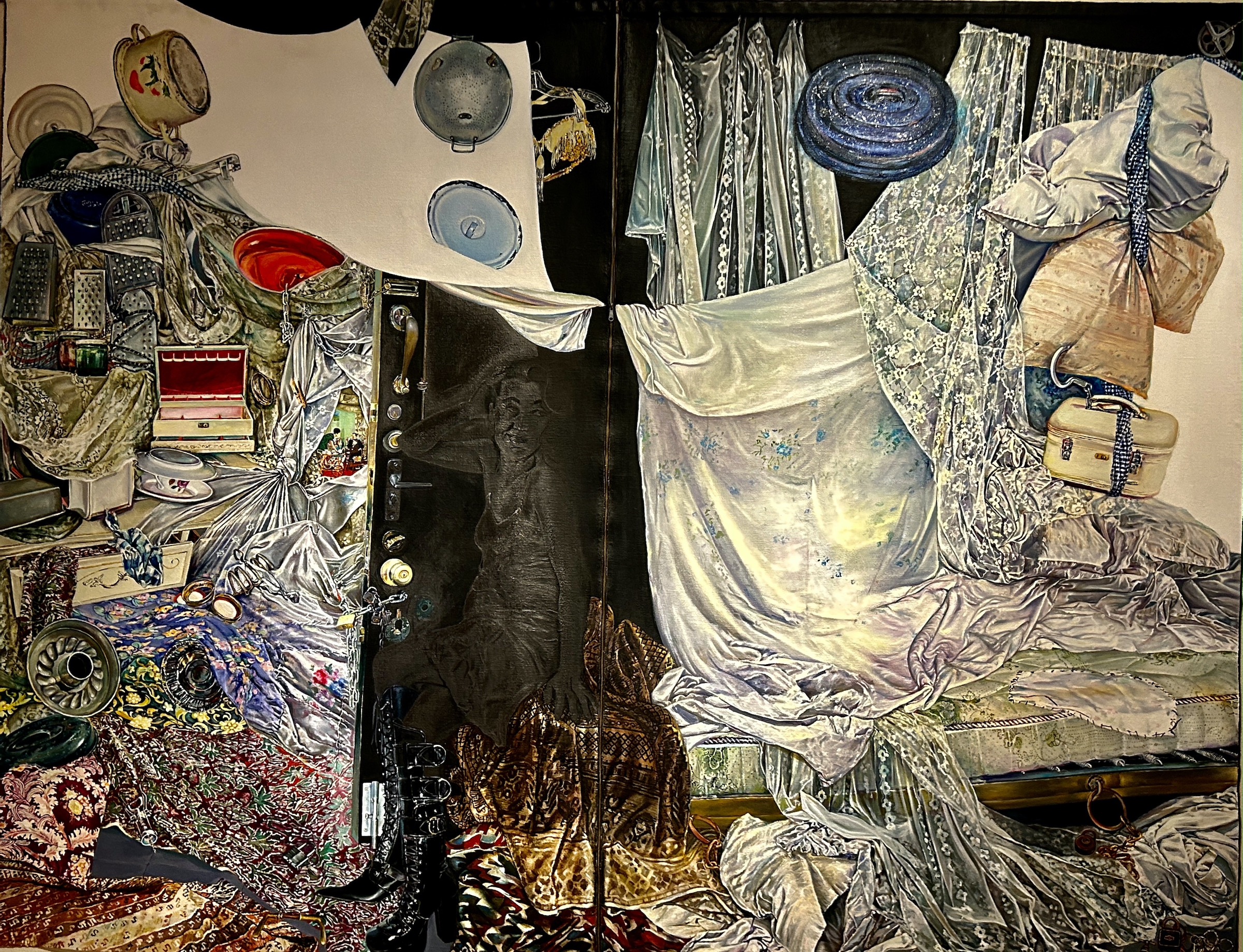
The next stop is the Atlantic Canadian gallery where you enter from the Judy Blake gallery and get a view of this magnificent artifact, Grandfather Akwiten, the oldest known Maliseet canoe and one that sat in obscurity for over 200 years at the University of Galway after being taken to Europe by an Irish captain serving in the British army. In 2003 it was returned on loan to the Museum of Civilization in Ottawa where it was restored. Finally in 2009 it returned to its place of origin and is now on permanent loan to the Beaverbrook Art Galley. Its large size denotes it was a freight canoe that would have carried goods and men up and down the waterways of 19th century New Brunswick.
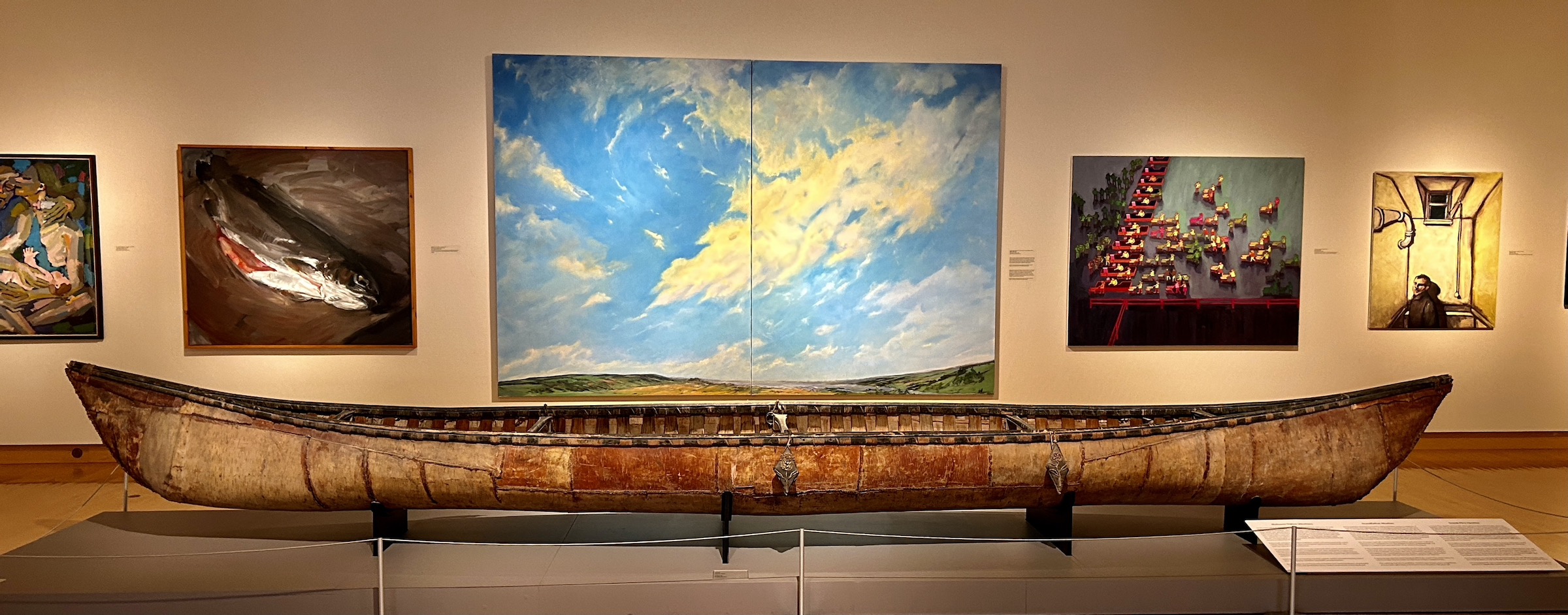
Next we come to one of the most beloved of all Maritime artists Maud Lewis whose story of deprivation, abuse and poverty is well known to most Maritimers. This is her Covered Bridge in Winter which is one of her more complicated works with multiple moving figures. Most Maud Lewis paintings are quite static – think of her favourite theme, two oxen staring straight out from the canvas. What’s interesting about this work is speculating where and if Maud Lewis ever actually saw a covered bridge. She never travelled more than an hour from her birthplace. There were three covered bridges over the Annapolis River, now long gone, so she might have seen one of them, but who knows if this scene is something dreamed in her mind or a reflection of a real place? It’s only fitting that this particular work should be found in a province still famous for its covered bridges.
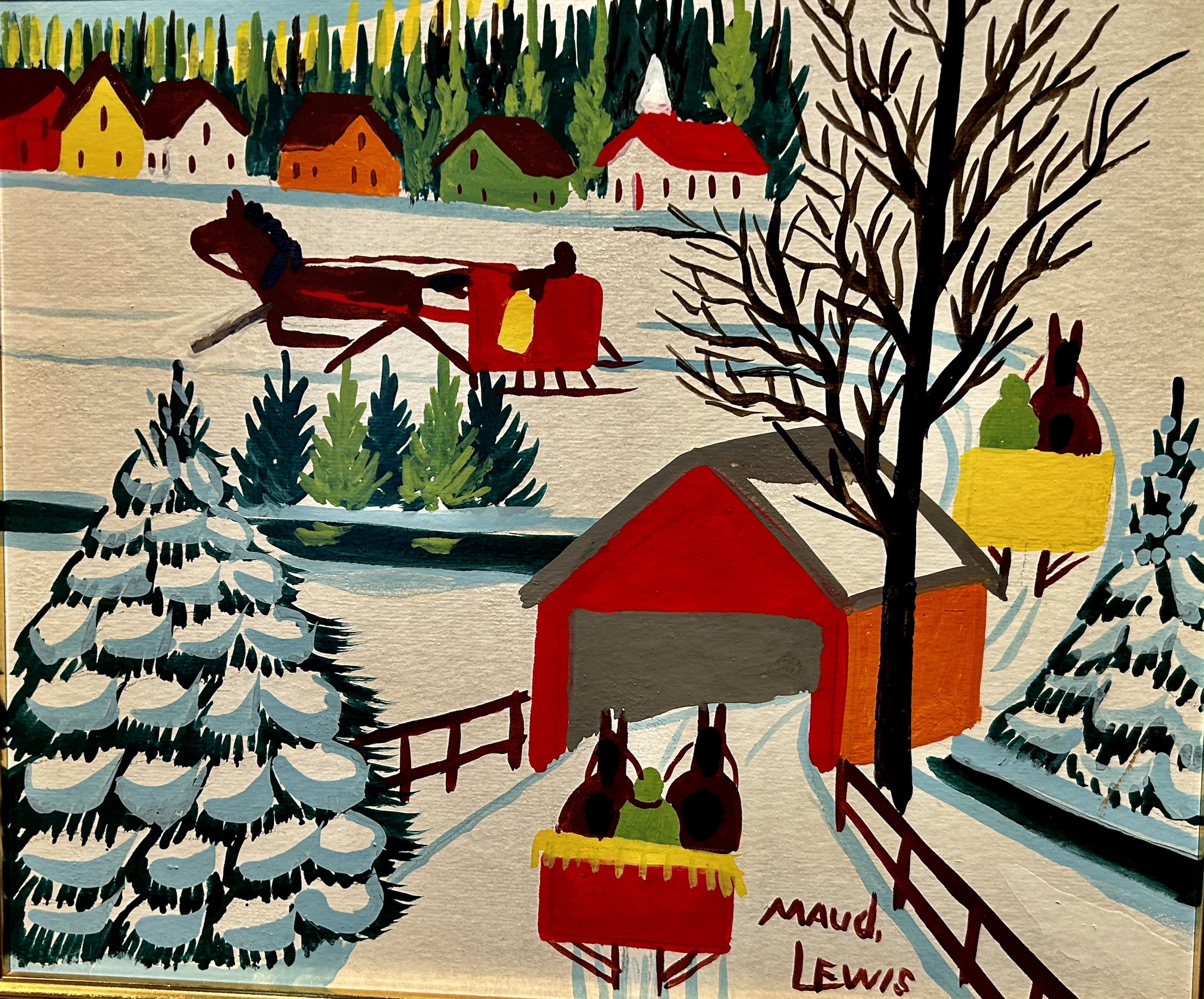
While Maud Lewis’ paintings have a child like innocence to them and are a simple portrayal of life around her, Joe Norris was a folk artist who, in my opinion had more depth to his works. I am a great fan of Henri Rousseau, widely recognized as the first artist of the Primitive School and Joe Norris’ works have that same quality of combining elements of nature in a strange and sometimes disturbing way. Rousseau often included lions and other wild beasts in his works and here Norris uses the black bear in the same manner. However, Norris presents the bear in an almost comical pose, but enough to scare the nearest picker into dropping his bucket and taking flight. The multi-hued blueberry field shows an ability far beyond than that of most untrained artists. Whenever I see a Joe Norris work I think back forty years ago when I wanted to buy a beautiful folding table that Norris had completely covered with his typical bright designs. He was as well known for painting furniture as he was for working on a canvas. The price was $250.00 which I thought was a steal, but my then wife hated folk art and to my eternal regret I passed on it. If I wanted to buy something similar today, even if I could find it. the price would be at least 20 to 30 times what I would have paid back then.
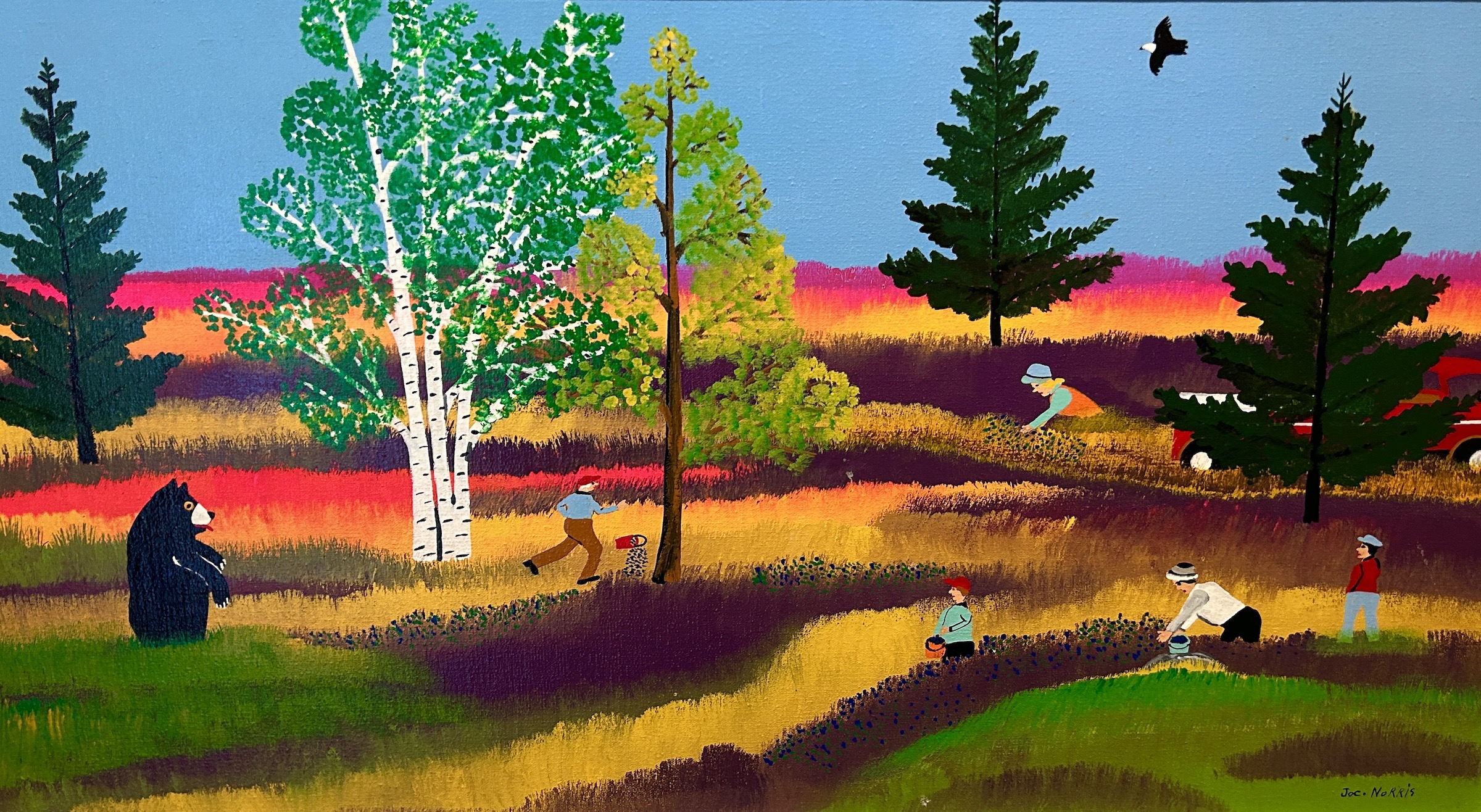
Probably the most famous artist from Atlantic Canada of recent note would be Alex Colville who literally invented his own style that still defies categorization. Admittedly influenced by the magic realism of Edward Hopper and Andrew Wyeth, still his works are unmistakeable in their uniqueness. Colville was also famous for being meticulous about his work, often taking months to complete a single painting which is why his output was relatively small and the prices for his works very high by the standards of the day. Every work seems to take place from a different perspective, this one from overhead. And every work seems to have a story behind it, but what that is can be the subject of great debate, and nothing is ever conclusive. There is a palpable sense of mystery that overlies almost all of his works.
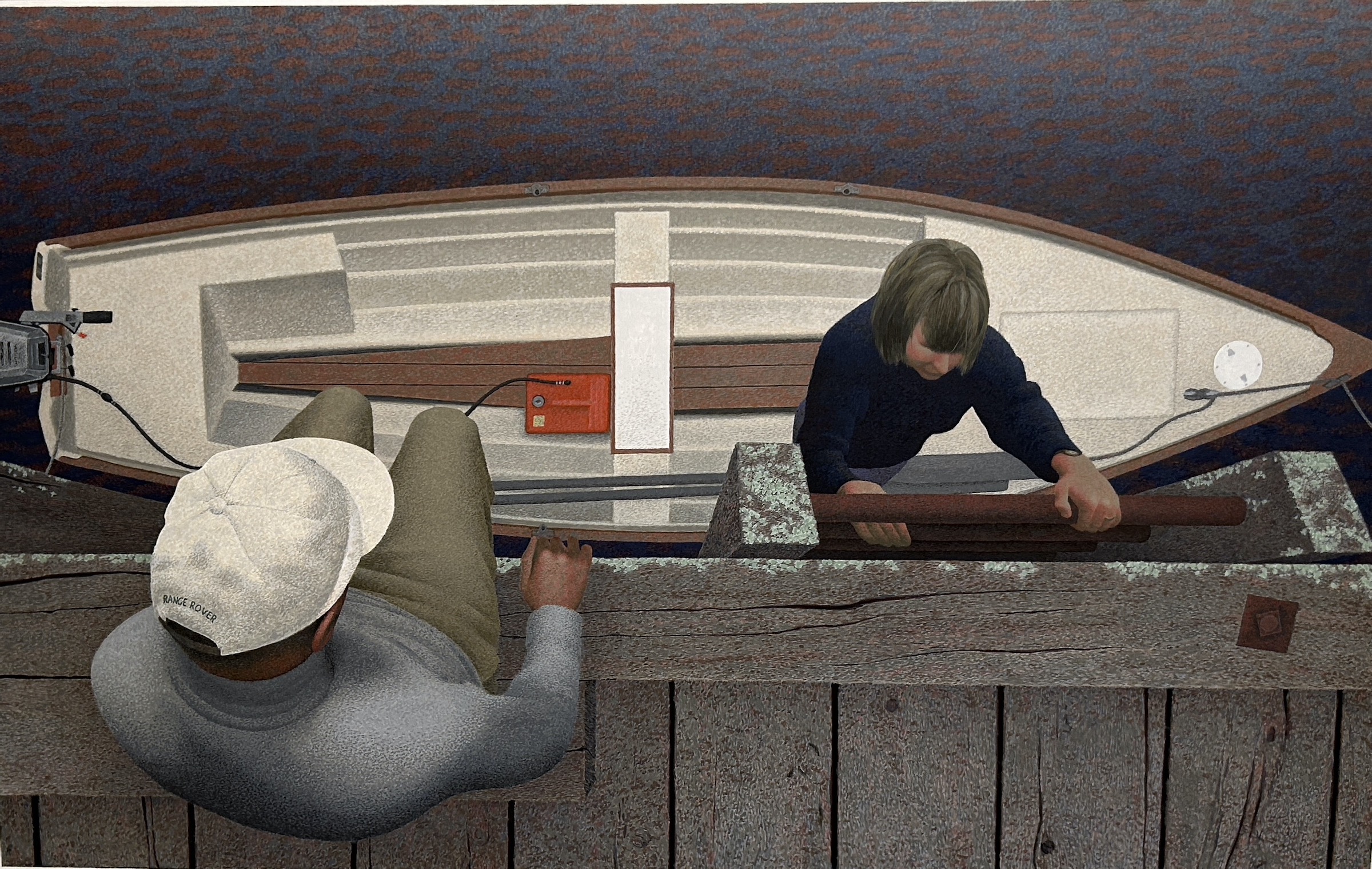
I do not recall seeing this painting before the visit today, but I suspect it very much influenced a painting that we actually have over our living room mantle by Shelley Mitchell. Shelley loves to paint small boats, but this is the only one I have found painted from the same perspective as the Colville boat.
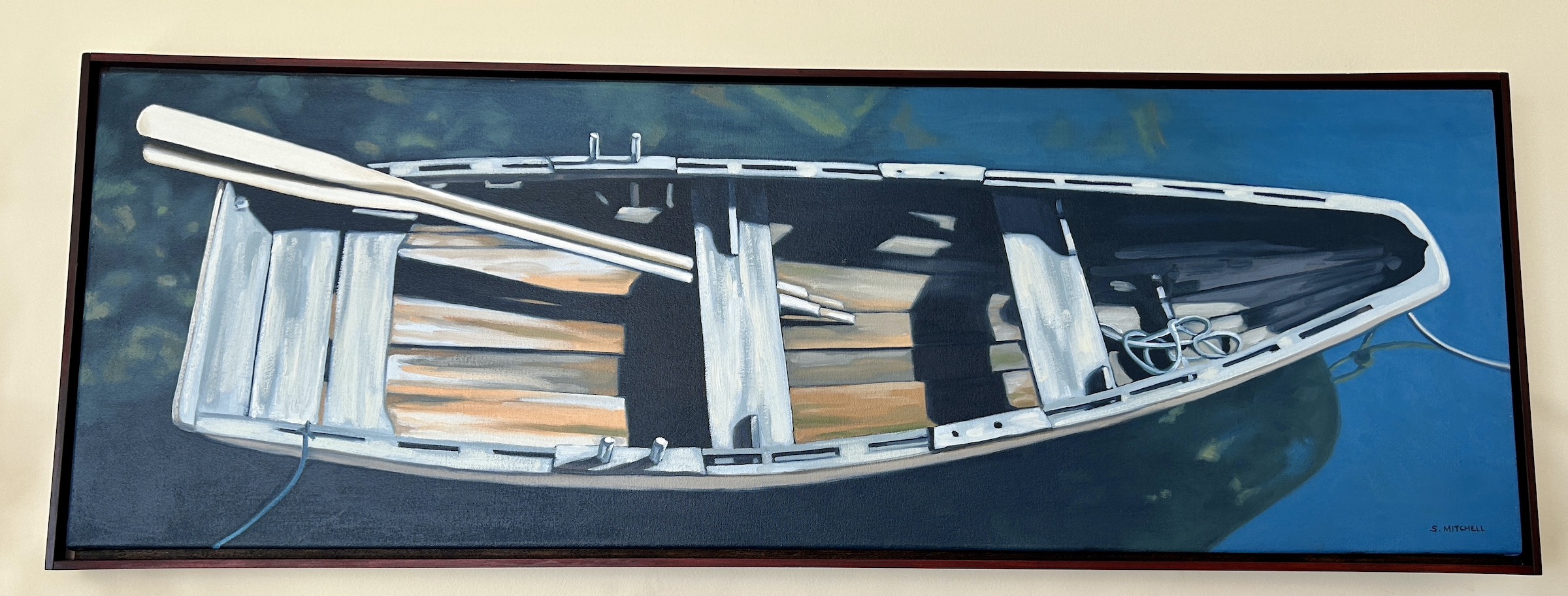
My final selection from among the many great Atlantic Canadian artists is this work by Mary Pratt, usually thought of as a Newfoundland artist, but actually a native of New Brunswick until she married fellow artist Christopher Pratt who took her back to Newfoundland after both met at Mount Allison University. She was a practitioner of photo-realism whereby in order to capture fleeting light she would photograph her subject first and use that as the basis for her paintings. Glossy Apples is about as good an example of this technique as you will find.
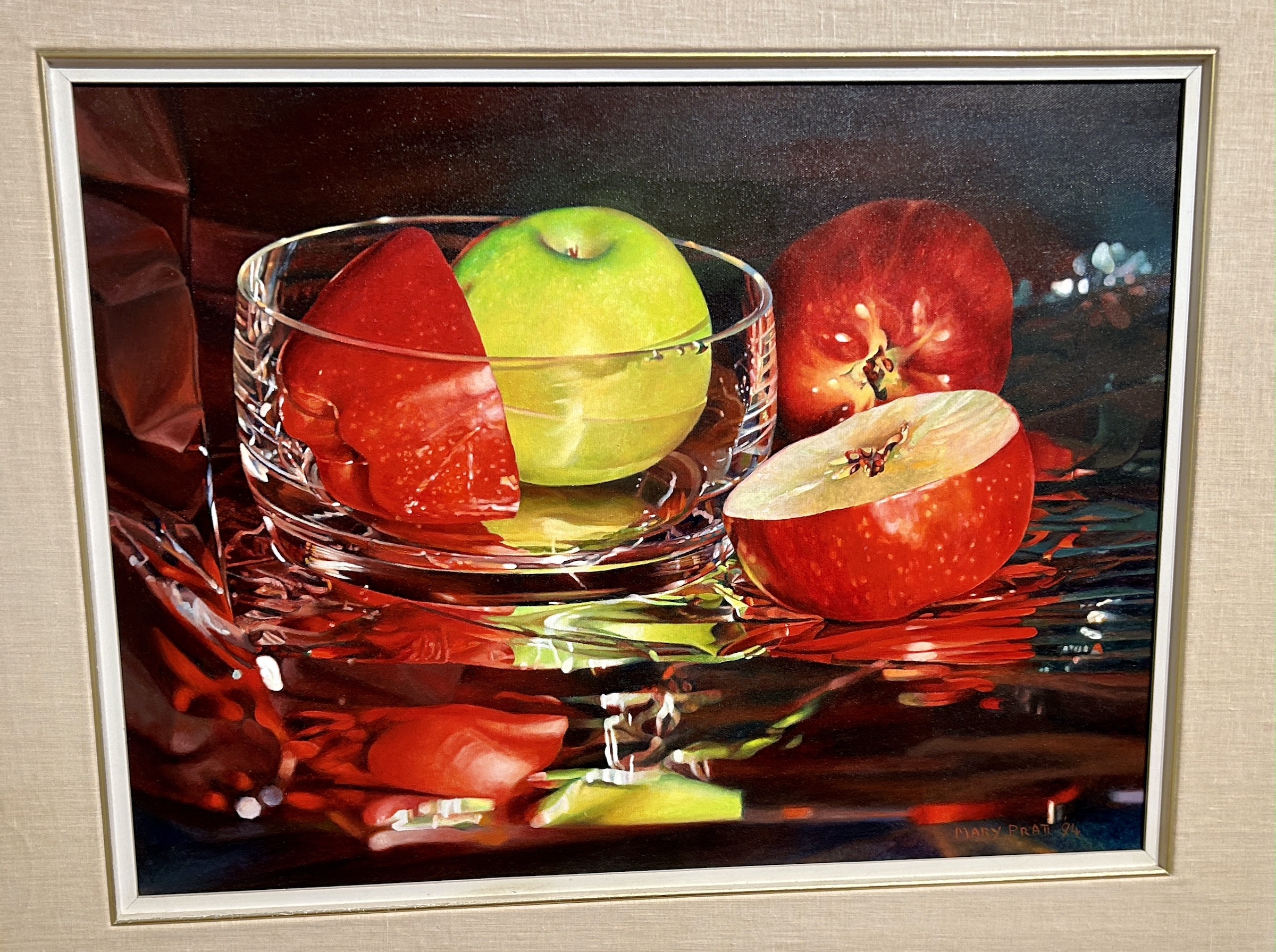
Well now that we’ve covered the Canadian portion of the Beaverbrook Art Gallery, let’s see what else catches my eye. Turns out it is another Canadian painting and one that I have wished to see since seeing the story about its acquisition and unveiling in Fredericton only in January of 2023. Tim Okamura is a Canadian born artist now living in New York City who specializes in portraits of people of colour.
Fredericton’s Willie O’Ree was the first black player in the NHL, joining the Boston Bruins in 1958. His career in the big leagues was not long, but notable for the abuse O’Ree endured from both the fans and other players. He was traded to the Montreal Canadiens after the 1960-61 season and never given an opportunity to make the team which he said was because the organization was run by racists. That would be the Molson family in case you are wondering. What is ironic is that Jackie Robinson got his start with the Montreal Royals fifteen years earlier and had always been loved by the fans there. Willie O’Ree was never given the same chance.
Okamura painted O’Ree in 2019. It is a simply brilliant portrait with the aged player garbed in his Bruins jersey holding a hockey stick and wearing his Hall of Fame ring. As noted the Beaverbrook Art Gallery acquired the painting only recently and Tim Okamura unveiled it on the 65th anniversary of O’Ree’s first NHL game.
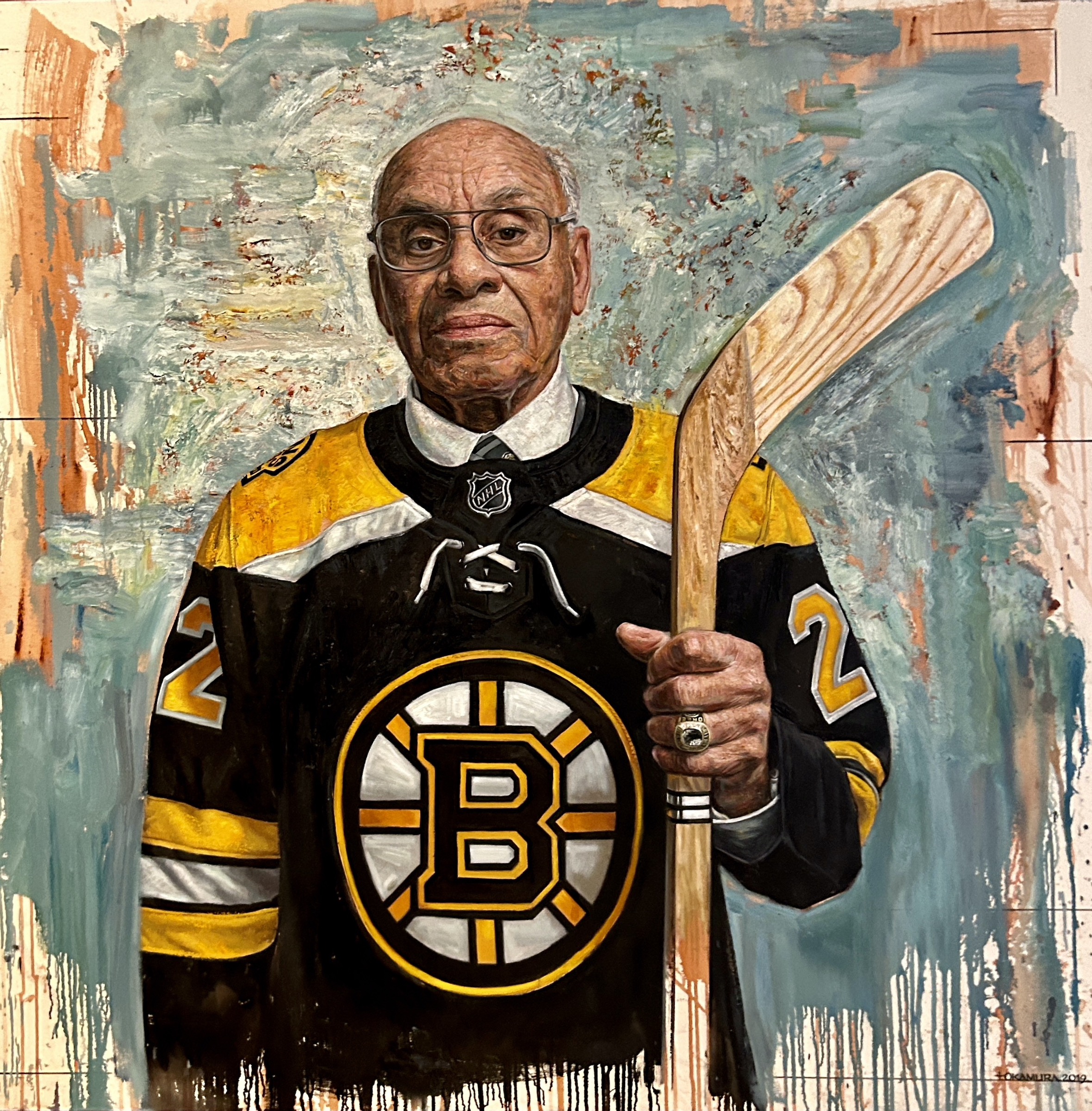
The next painting I’m going to discuss is from someone everybody knows as a great Prime Minister, Nobel Laureate in literature and a participant in the last cavalry charge in the British Empire. But how many people know that Winston Churchill was also a very capable painter? He loved to spend time in Morocco where he indulged his favourite passion. By coincidence Adolph Hitler was also a painter, but nowhere near as proficient as Churchill which must have been yet another irritant to the little madman.
Lest you think that Churchill’s paintings are just curiosities, Brad Pitt bought one for $2,950,000.00 for his then spouse Angelina Jolie. After they separated she turned around a sold it for $11,500,000.00 USD which is more than any Canadian piece of art has ever fetched. In case you are interested that figure is $11,200,000.00 CDN for Lawren Harris’ Mountain Forms in 2016.
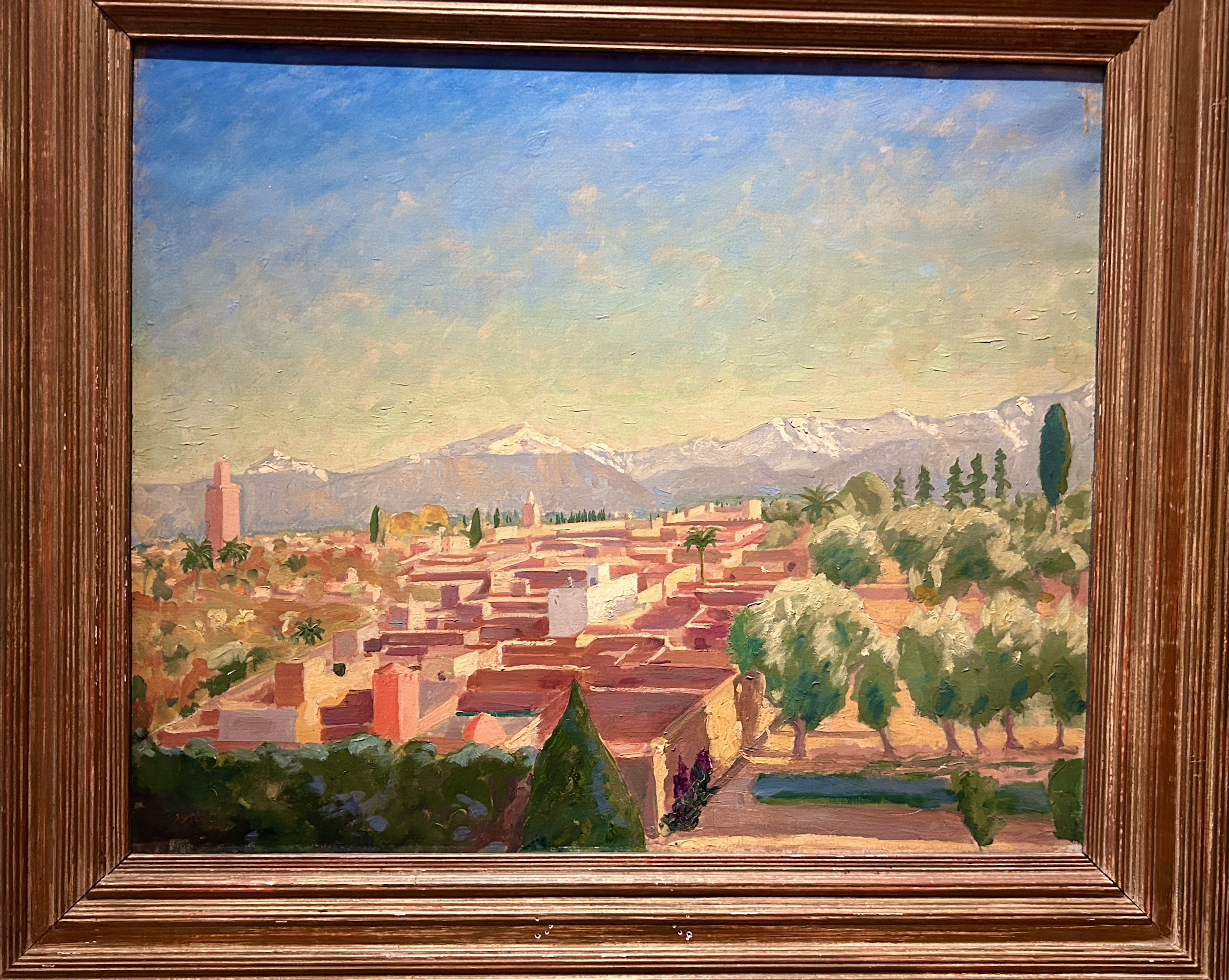
One of my favourite artists from the late 19th century is the Frenchman Jacques Joseph Tissot whose career flourished in England where he was commonly referred to as James Tissot and that is how is described as the artist of this amazing work at the Beaverbrook Art Gallery. Tissot specialized in portraits of the English gentry, but not in the conventional sense and this painting is a perfect example of that. You read the title The Passing Storm and you immediately look through the windows at the clouds and light which Tissot has captured brilliantly. But then you realize that the title is a double entendre. The real passing storm is the cooling off that is going on between the couple that has obviously just been quarrelling, she with her back turned and he with his hands in his pockets and refusing to look at her. The addition of the ship’s masts adds another element. Are they also on a ship? Who knows?
This is definitely one of the most important pieces in the Beaverbrook Art Gallery in my opinion.
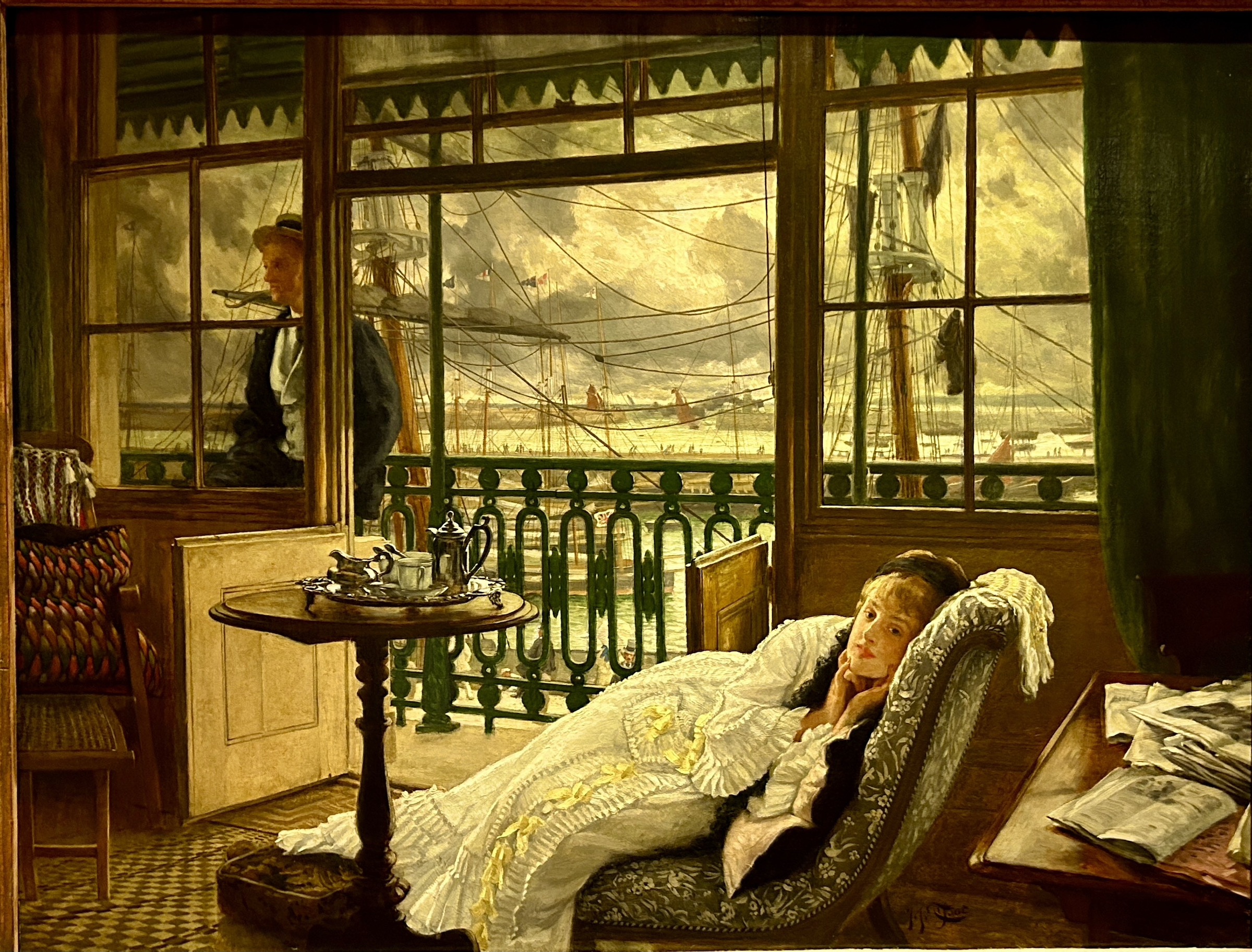
Another of my favourite artists is John Singer Sargent who is often mistakenly referred to as an American painter when in reality he was born in Florence of American parents, but never set foot in the United States until he was already world renowned. Sargent painted in many different styles, but is best known for his full length portraits. You can see some of these by taking a trip to Boston and visiting both the Isabella Stewart Gardner Museum and the Boston Museum of Fine Arts. There are a number of Sargent paintings in the Beaverbrook Art Gallery, this one depicting a scene from Lake Garda in northern Italy in 1913. It reminds me very much of the impressionist works of Monet and Boudin painted in Normandy many years earlier and I’m sure Sargent would have been familiar with them. Who knew that within a year the peace and tranquility depicted in this scene would evaporate into the worst conflagration in world history to that time?
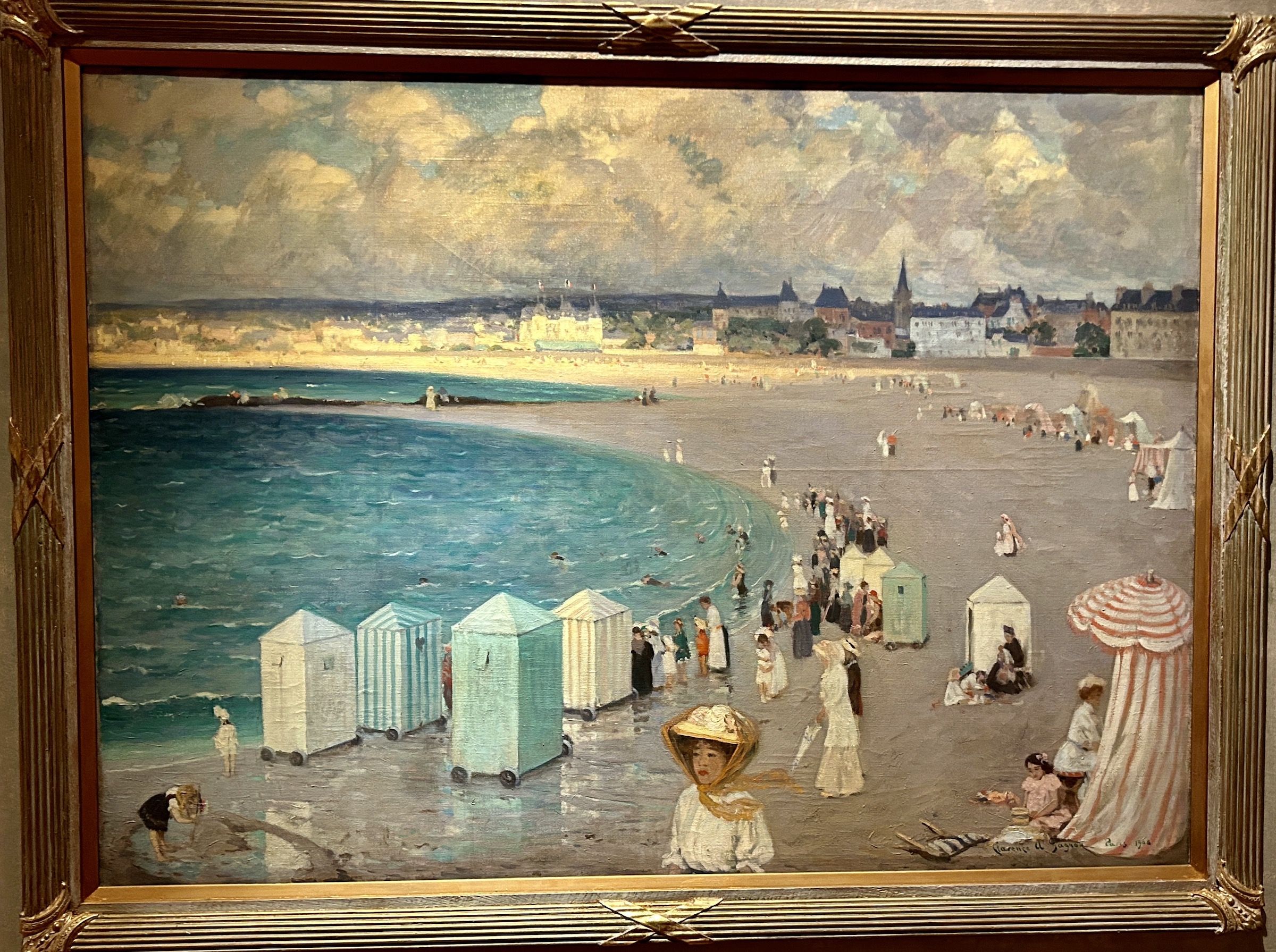
I return now to a man who has already been featured in this post, Winston Churchill, but this time it is his magnificent head that is the subject of this Graham Sutherland study and boy is there a great story behind it. In 1954 the British parliament commissioned up and coming English artist Graham Sutherland to paint a full length portrait of the great man for presentation on his upcoming 80th birthday. Sutherland had already painted Lord Beaverbrook who was a friend of both the artist and a long time confidant of Churchill. This study is one of six Sutherland completed and to me it captures him perfectly.
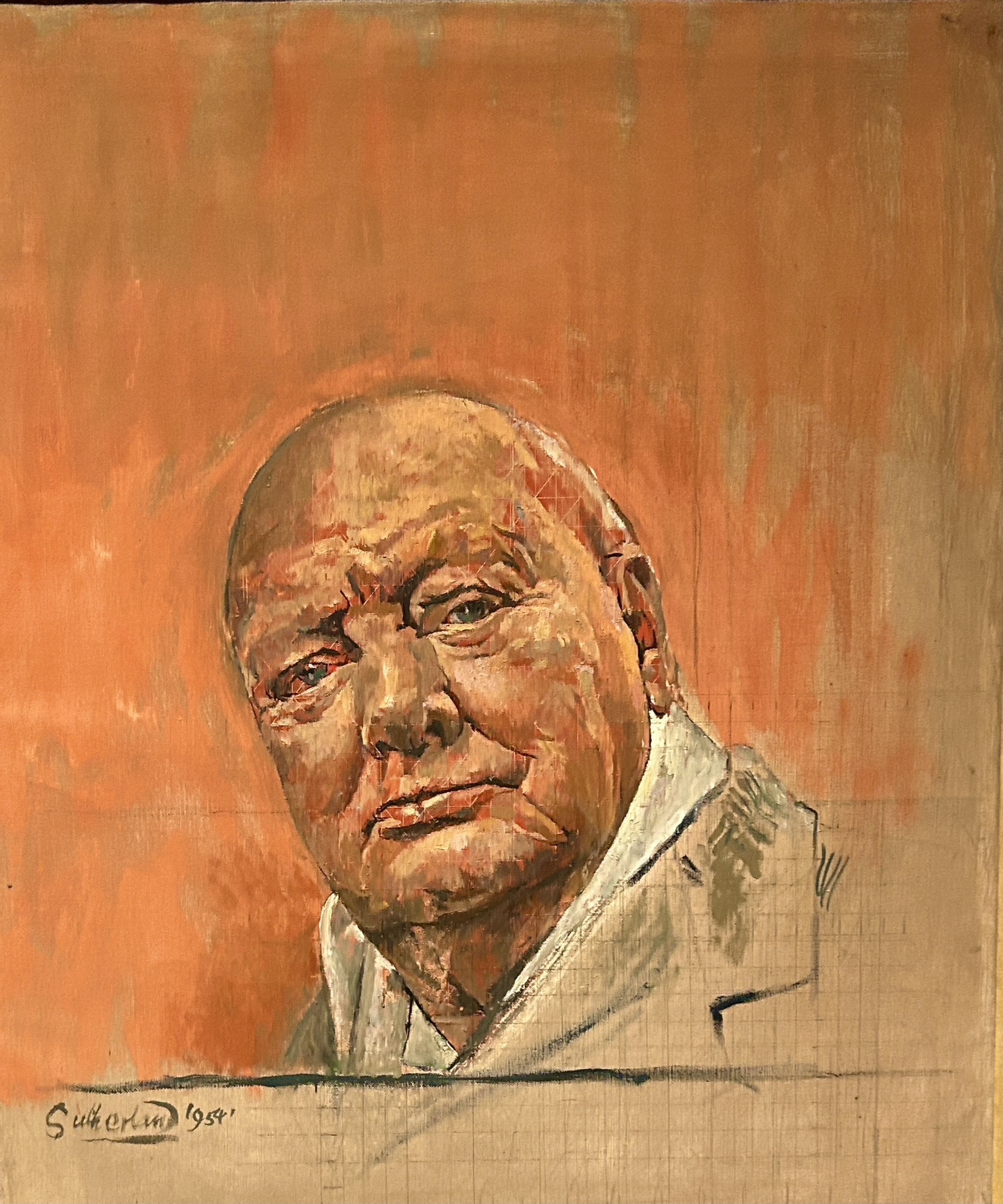
This is the finished product and Churchill absolutely hated it. You will find it nowhere today because a year or so later he ordered it burnt by a longtime servant at Chartwell, although the public wasn’t made aware of this until 1979. Many people, me included, think Winston Churchill was the greatest figure of the 20th century. He had been in the public eye for over sixty years when Sutherland was asked to paint what he saw. And what he saw was a man who knew his time had passed and as per Dylan Thomas, did not want ‘to go gentle into that good night’. So the only place you’ll see any traces of this infamous painting are the items on display at the Beaverbrook Art Gallery.
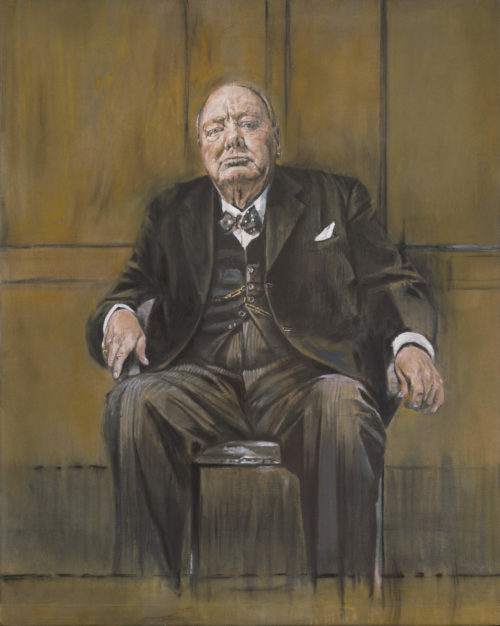
Incidentally, here is Sutherland’s portrait of Lord Beaverbrook which Beaverbrook called an outrage, but also a masterpiece.
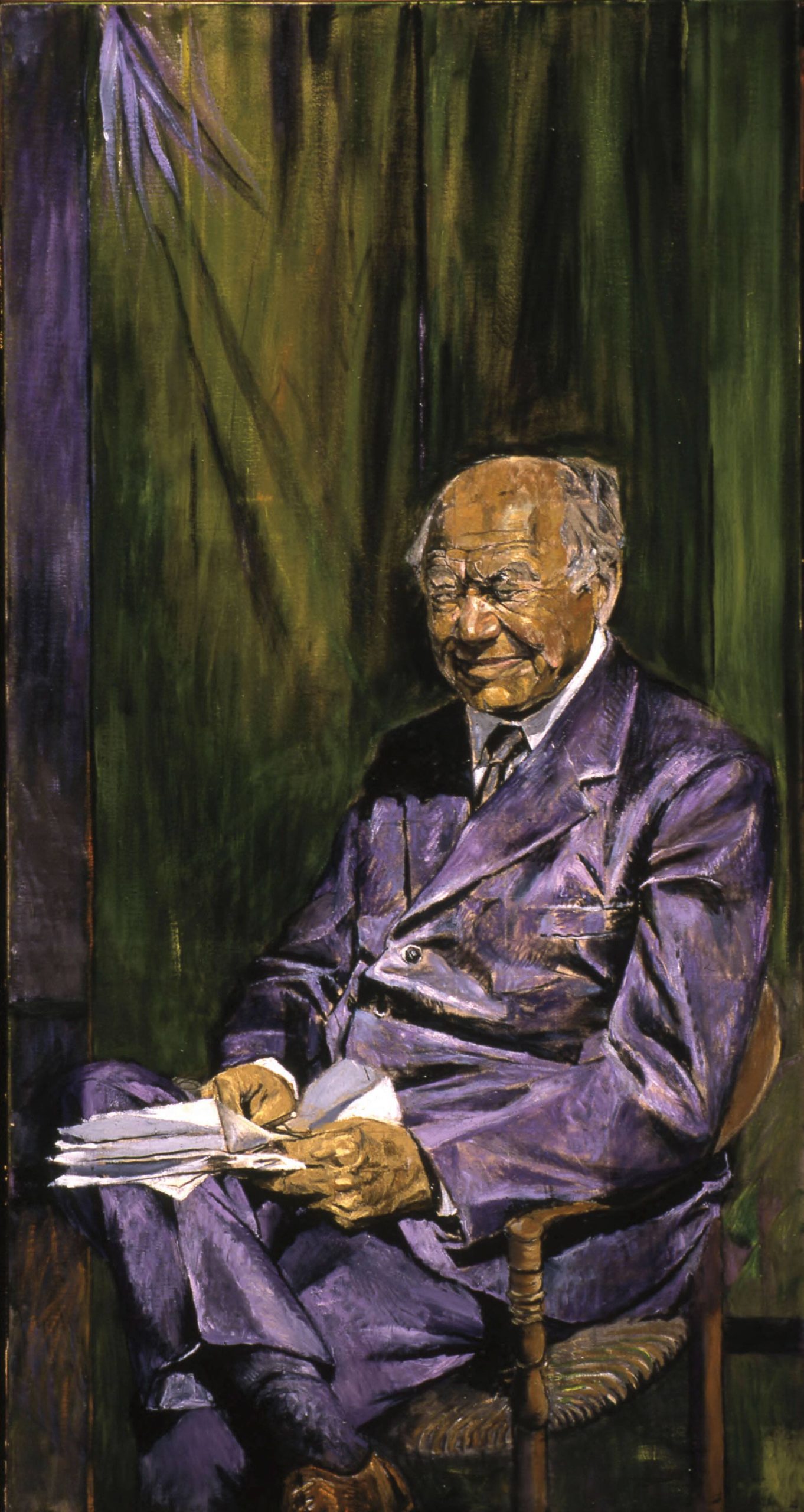
One artist whose reputation has soared since his death in 2011 is Lucian Freud, grandson of Sigmund. The painting on display at the Beaverbrook Art Gallery was one of those over which there was protracted litigation and thankfully for us Canadians it will remain in Canada. Given that his works have fetched as much as $86,265,000.00USD one can see why this one was worth fighting for. This is a deeply troubling painting as something terrible has clearly happened or is about to happen. The many is Lucian Freud and the woman is Lady Caroline Temple Blackwood who was the heiress to the Guiness ale fortune. She and Freud eloped to Paris and this scene is in the Hotel La Louisiane. What is about to happen is that she will soon leave him, realizing it was all a big mistake and he will be devastated. The fact that Lord Beaverbrook had the foresight to buy it shortly after it was painted once again shows his acuity as a connoisseur of art.
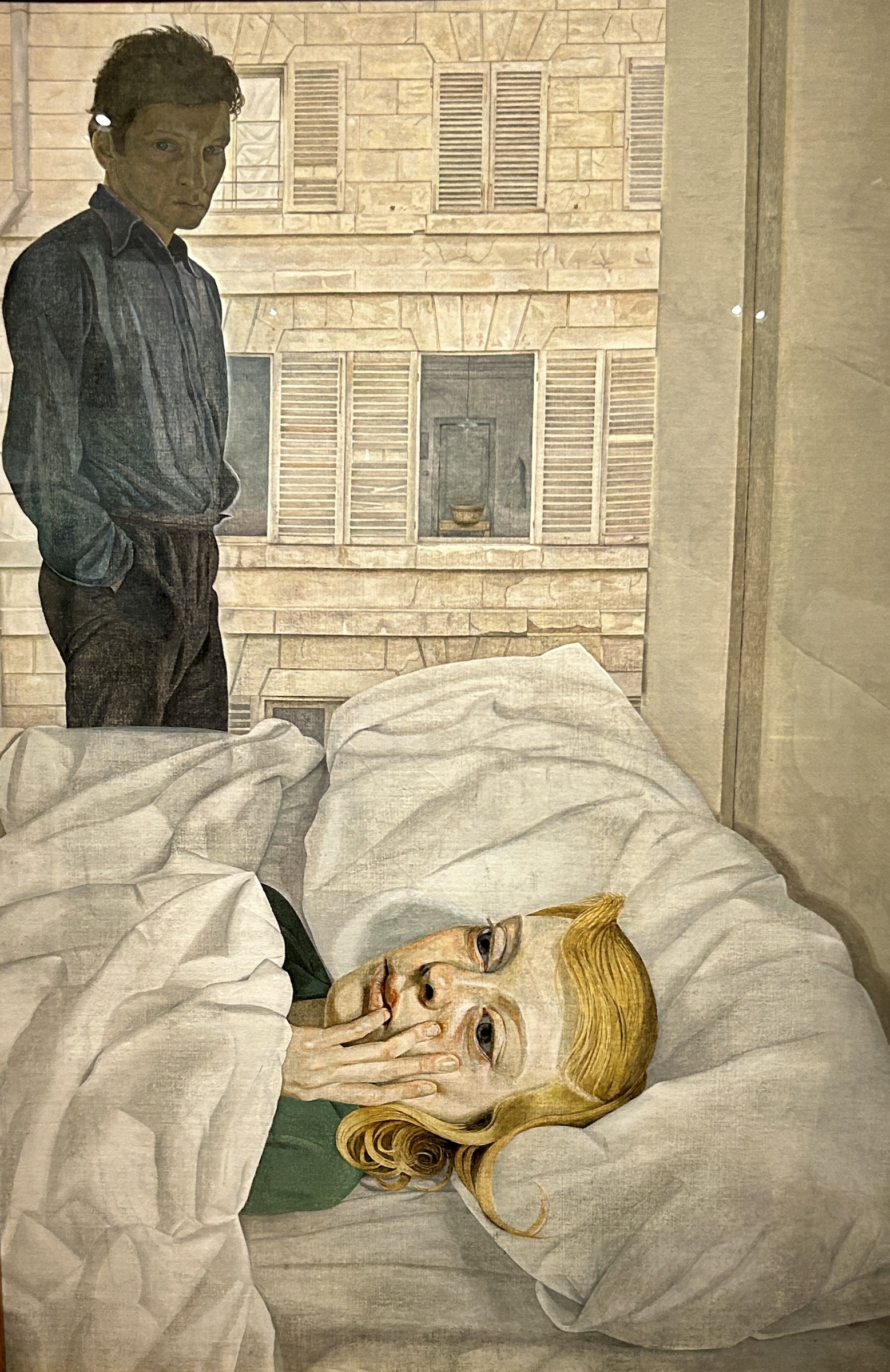
Speaking of disturbing pieces, this huge canvas by Canadian artist Attila Lukacs would never see the light of day in galleries in US states where the naked figure of Michelangelo’s David is verboten. Thank God we do not live in such backward thinking places and are permitted to view works like this even though some people might be offended by it. This work is one from the artist’s E-werk collection which was created in Berlin and features homoerotic themes in an industrial setting. Lukacs had a fascination with skinheads at the time although he professes to being more of a voyeur than a participant.
The composition of these huge works has drawn comparisons to such famous works as Rembrandt’s Night Watch and the technique to that of Caravaggio. Lukacs created only six paintings as part of this collection and they solidified his claim to being perhaps the most renowned Canadian artist working today. The Beaverbrook Art Gallery is to be commended for acquiring one of these great works.
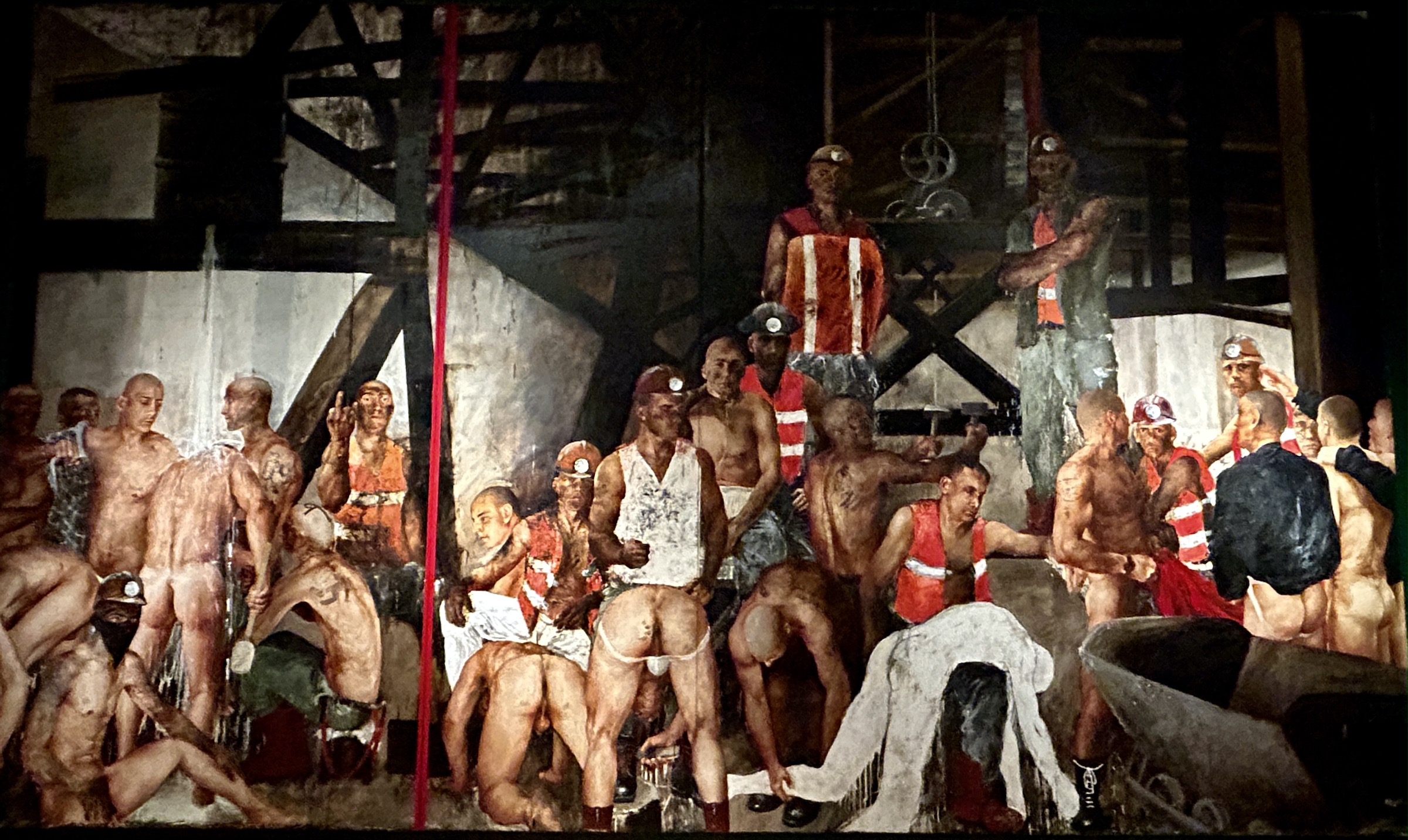
The next piece came as a complete surprise to me because I had seen it at least twice before and it was not at the Beaverbrook Art Gallery. In 1778 John Singleton Copley painted this scene depicting a real event that had occurred in 1749. A young English boy named Brook Watson had fallen overboard in Havana Harbour and been attacked by a shark which ripped off his right leg below the knee. Miraculously he was saved which you would not guess from the painting, and went on to be Lord Mayor of London in later life.
The 1778 painting is in the National Gallery in Washington D.C. where I have seen it and a replica painted shortly thereafter is in the Boston Museum of Fine Arts where I have also seen it. Both these paintings are huge – 90 inches by 71 inches. There is apparently a smaller 1782 version in the Detroit Institute of Arts. The one in the Beaverbrook Art Gallery is much smaller and is only attributed to Copley, I presume because there is no definitive historical record of its provenance. Still it’s an interesting version of one of the most famous American paintings of the time.
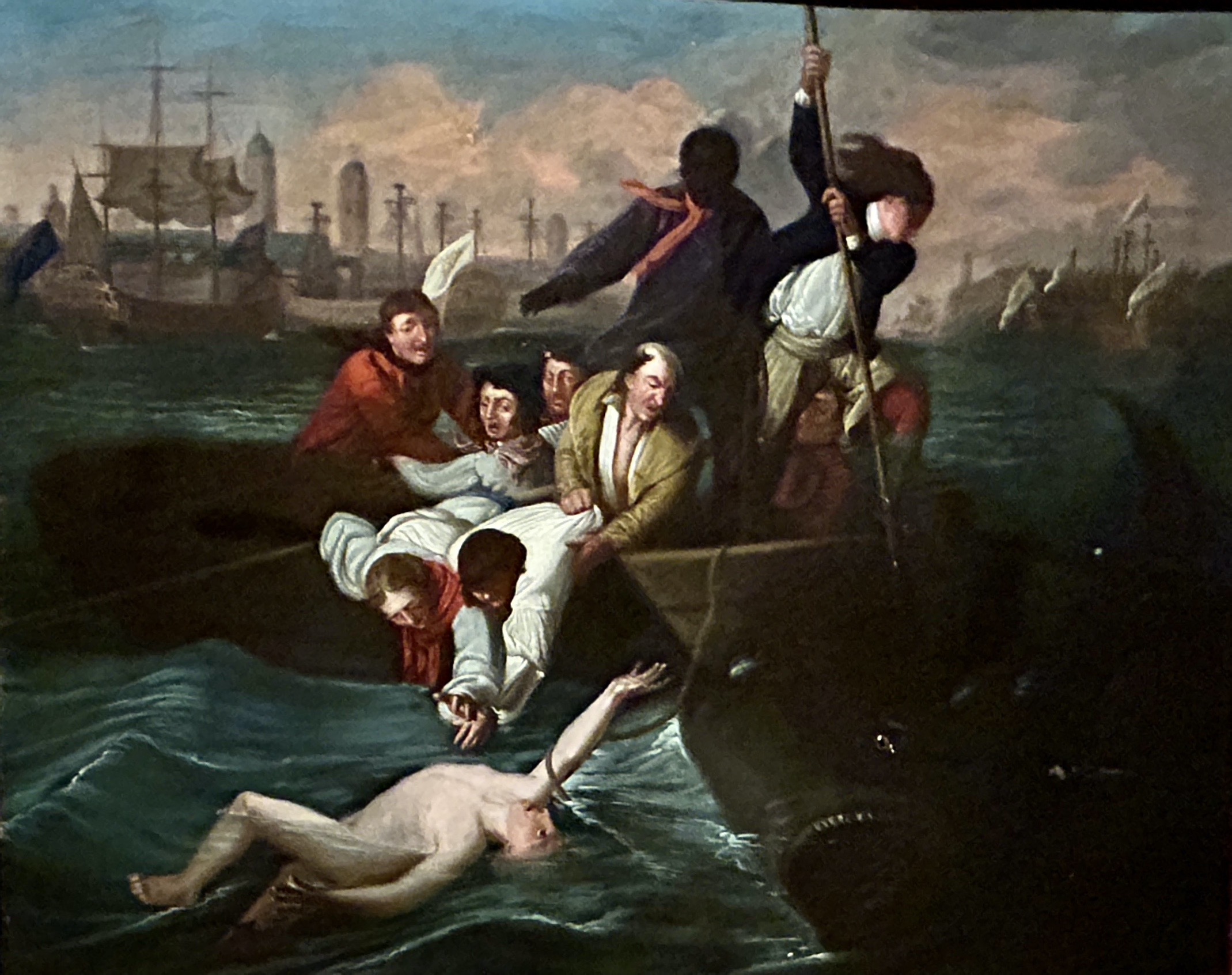
I will finally get to what for many years was the star attraction of the Beaverbrook Art Galley, Salvador Dali’s monumental Santiago el Grande which depicts Spain’s patron saint rising triumphantly from the sea holding up a giant crucifix. The painting represents man’s ascension to heaven and as with all Dali works it is loaded with symbolism. The huge left foot brings to mind the arduous Santiago de Compostela pilgrimage route, undertaken on foot by many thousands each year. The scallop shell on the horse represents the symbol of the pilgrims. The figure in the lower right is his wife Gala whom he often included in his works.
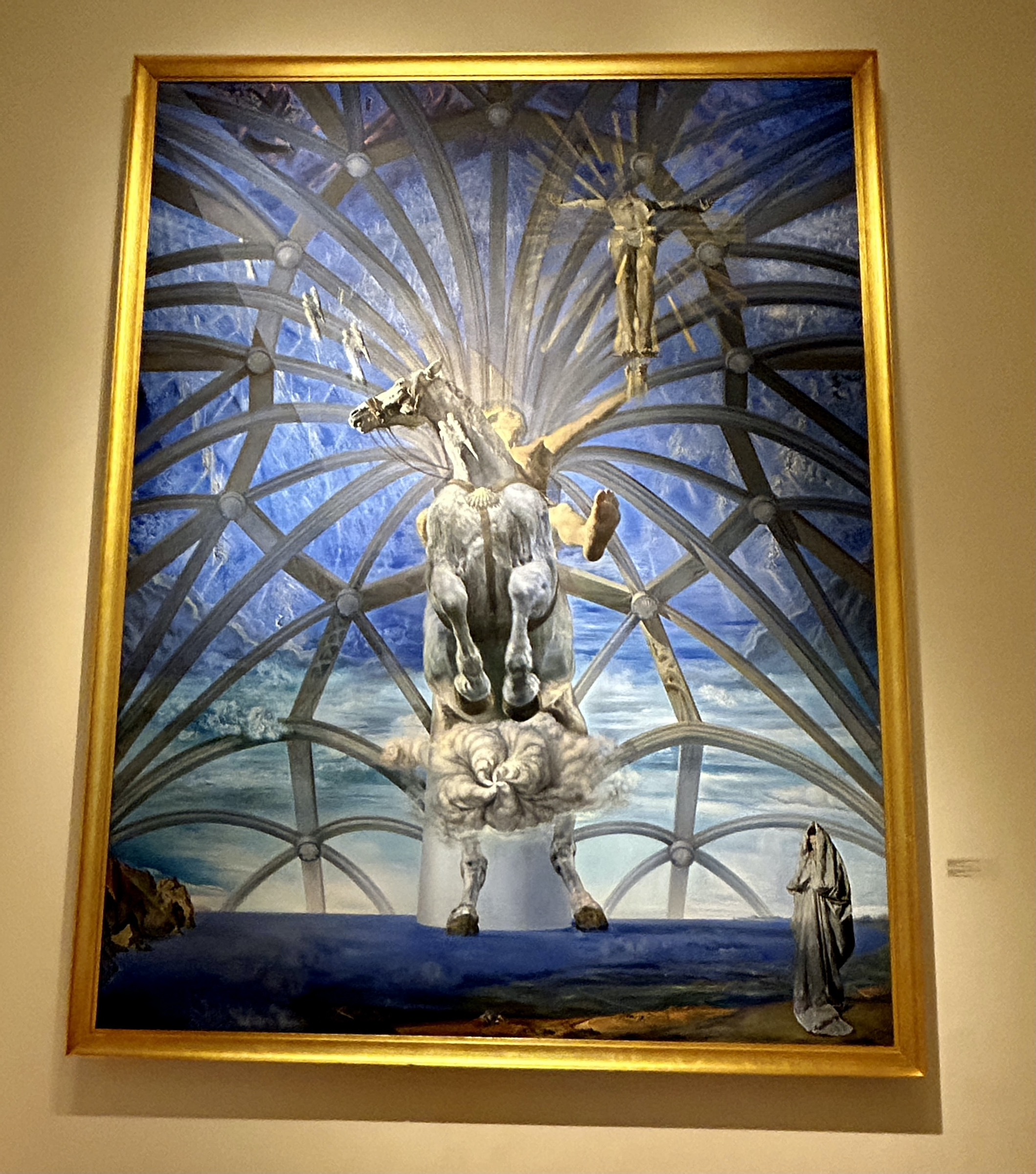
This is considered to be one of Dali’s most significant works so how did it end up in Fredericton? Turns out that Sir James Dunn after a chance meeting in New York City with Dali they became good friends and in 1949 Dali painted Sir James as, I’m guessing, a Roman senator overlooking the town of La Turbie on the French Riviera which has a famous Roman ruin which is depicted in the painting.
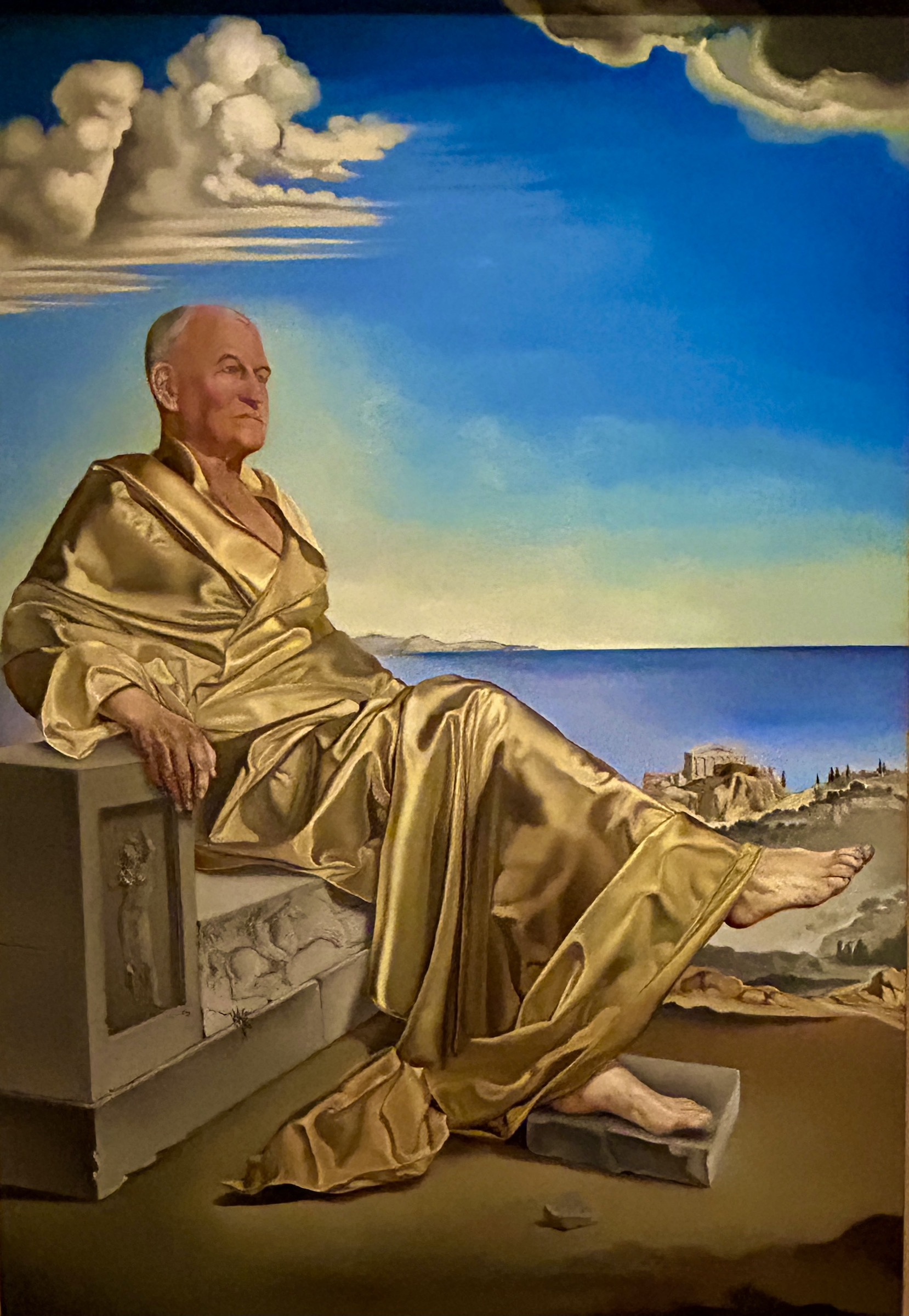
Santiago el Grande was painted in 1957 and I presume acquired by Sir James shortly thereafter. He donated it to the nascent museum and it has been on display ever since, but with a number of side trips to the Dali Museum in St. Petersburg, Florida, the Winnipeg Art Gallery and others for temporary exhibitions. It once stood very close to the entrance in a much more open space, but is now displayed in a smaller room along with the portrait above and two others painted in 1959. To be honest, I preferred its previous location, but that’s a small nit to pick with this great gallery.
I have barely scratched the surface of what there is to see at the Beaverbrook Art Gallery, but hope I have shown enough to convince the reader to head to Fredericton as soon as you can.

